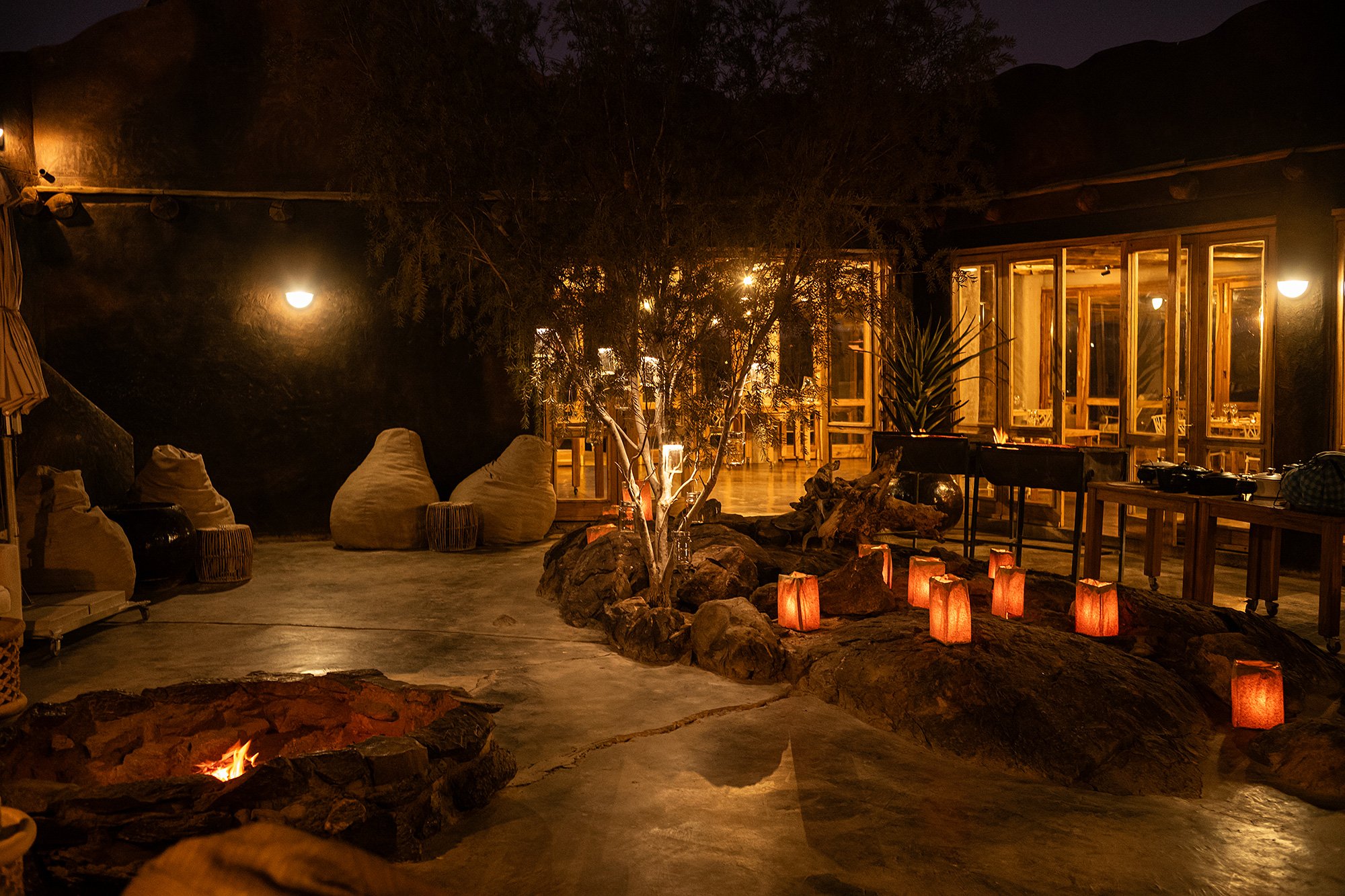
Namibia chapter eighteen
Doro Nawas, a petrified forest, and the rock art at Twyfelfontein.
I wake up to an incredible sunrise. A heavy fog has descended upon the valley and rising sun paints the skies purple. A sliver of moon hangs bright, a ring of light glows around a crescent held up like a bowl. The mountain looms a shadowy form.

As the sun rises, the fog burns off. A cloud settles along the base of the mountain, a stubborn skirt that’s the last to dissipate.
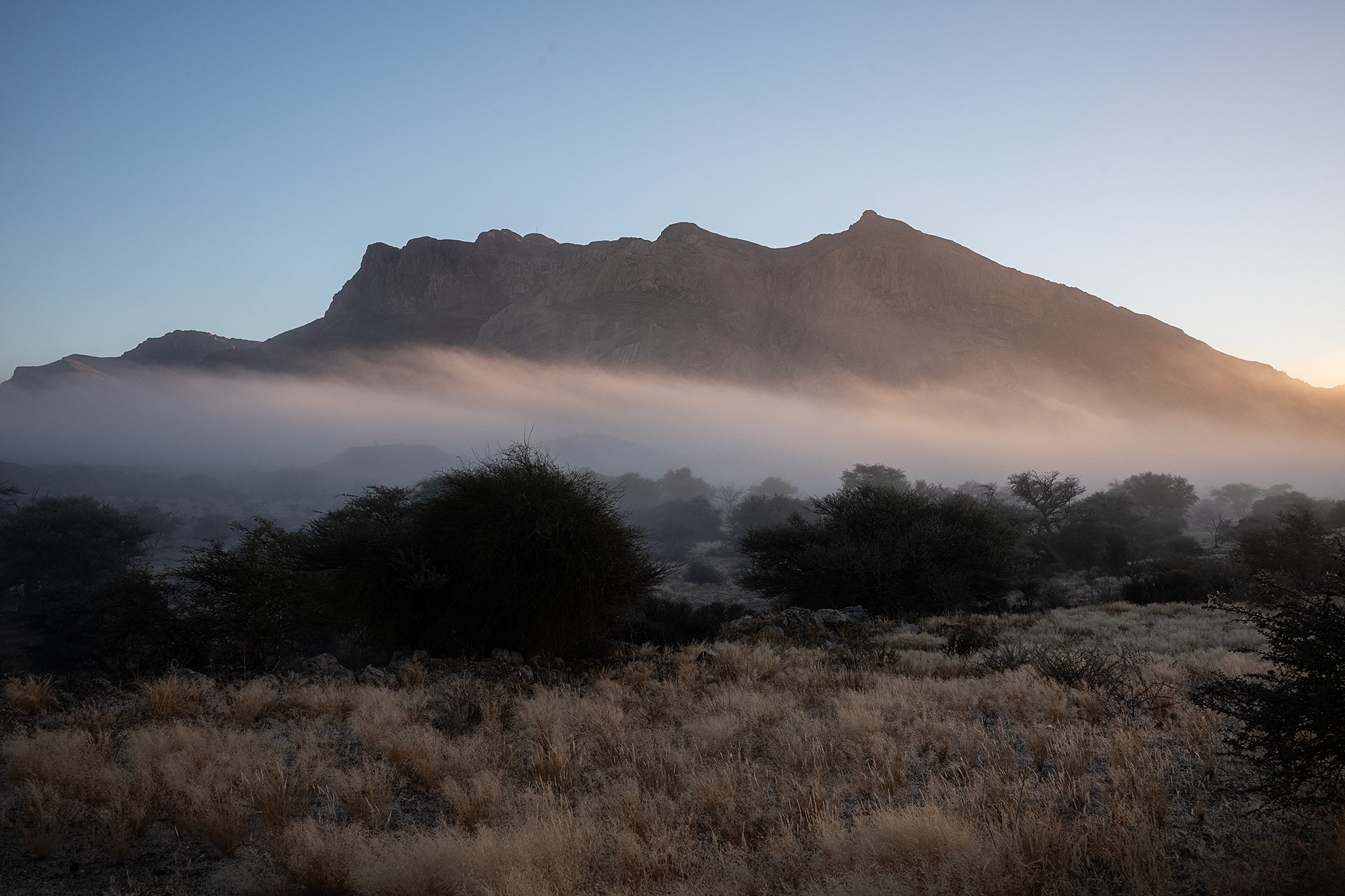
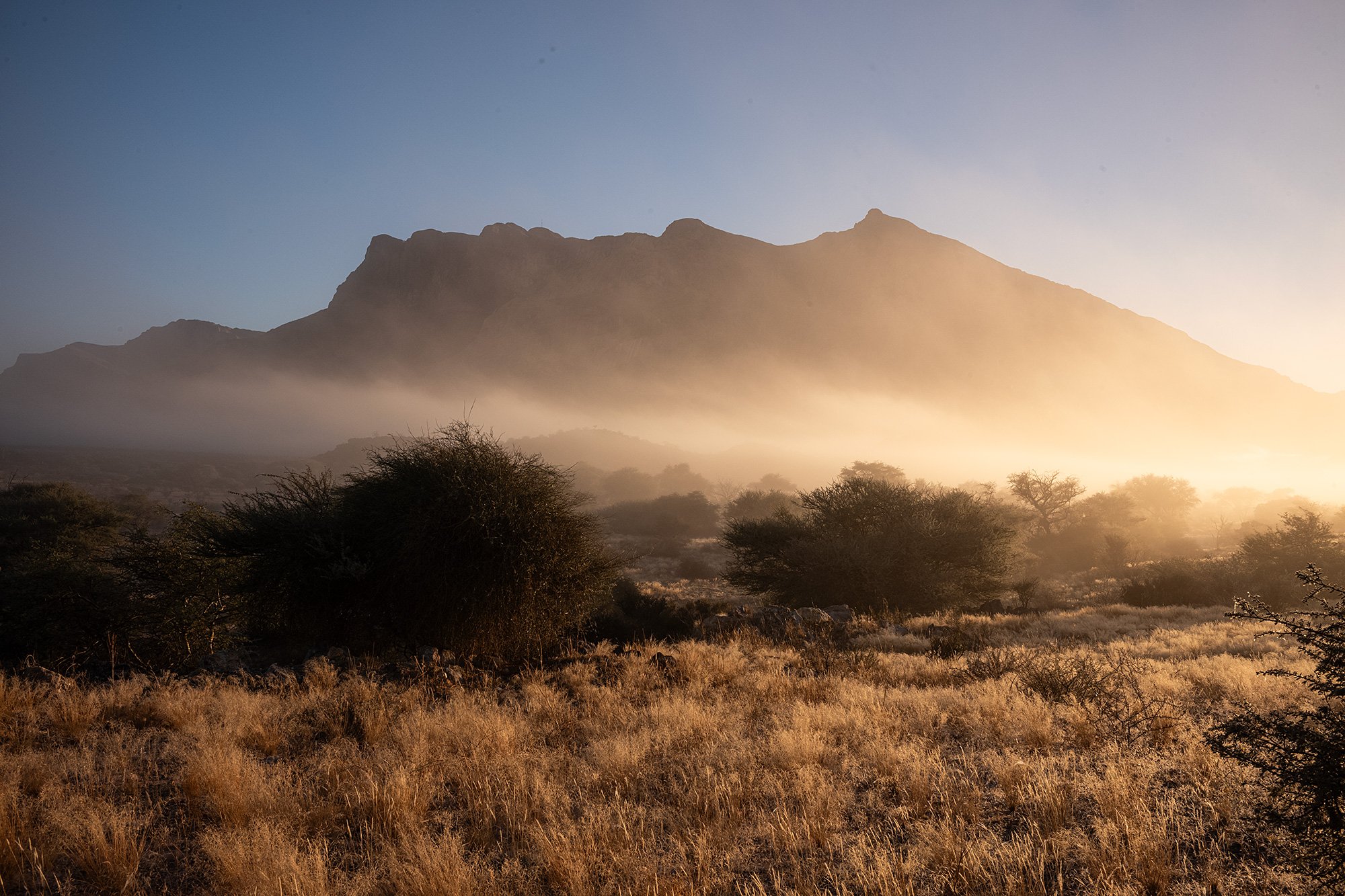

After breakfast I load the car and head towards the front gate. A couple of ostritches race me down the dirt road. I smile at the sight, excited to see them on the side of the road.
William lets me out the front gate and I wave to him as I turn onto the main road. The fog is thick and I drive slowly up and around the bend, careful to keep my speed down until I have a better view of the road. As I round the bend the fog lifts, as if I’ve come across a new land, and I settle in for the drive north.
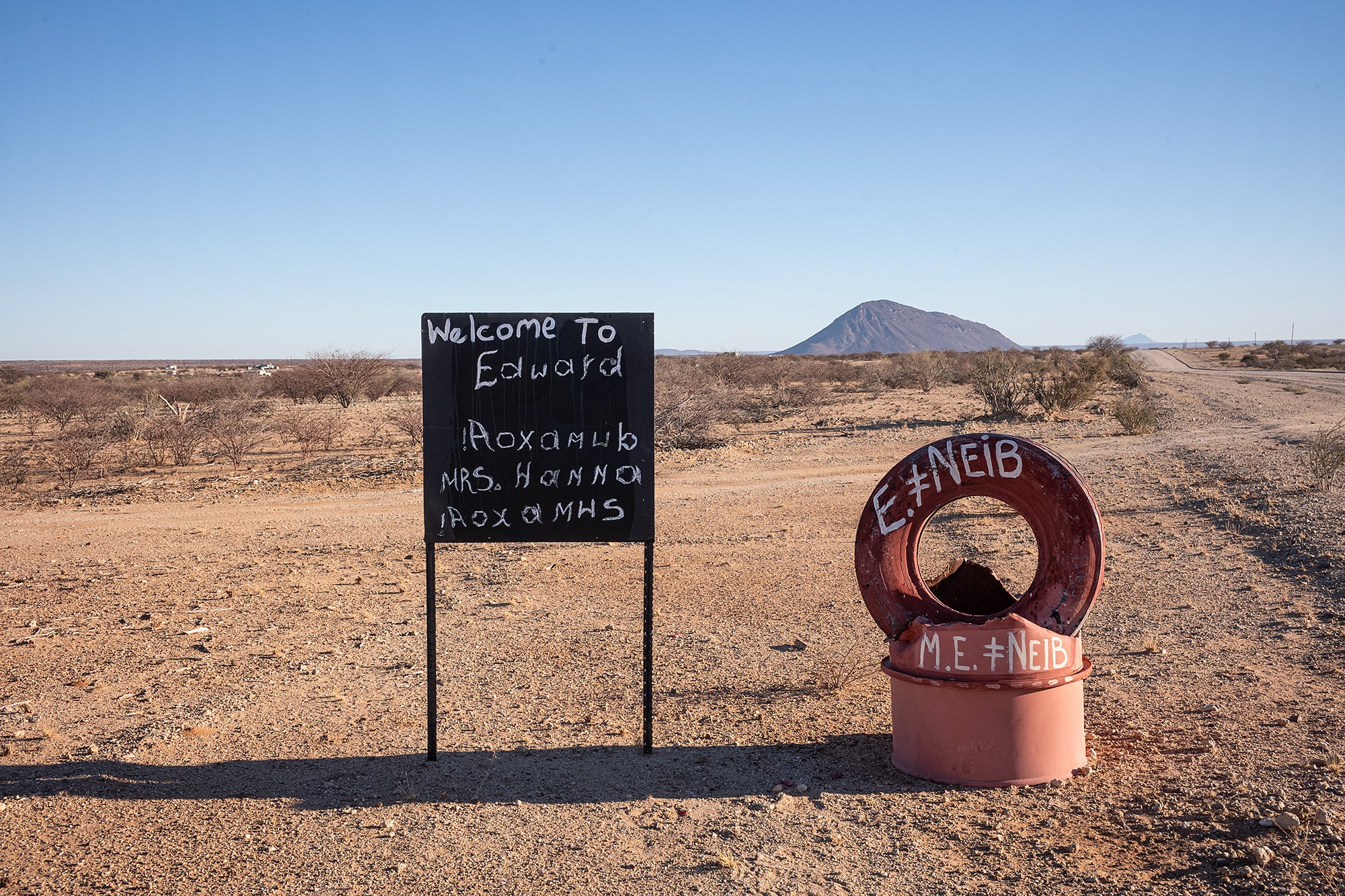
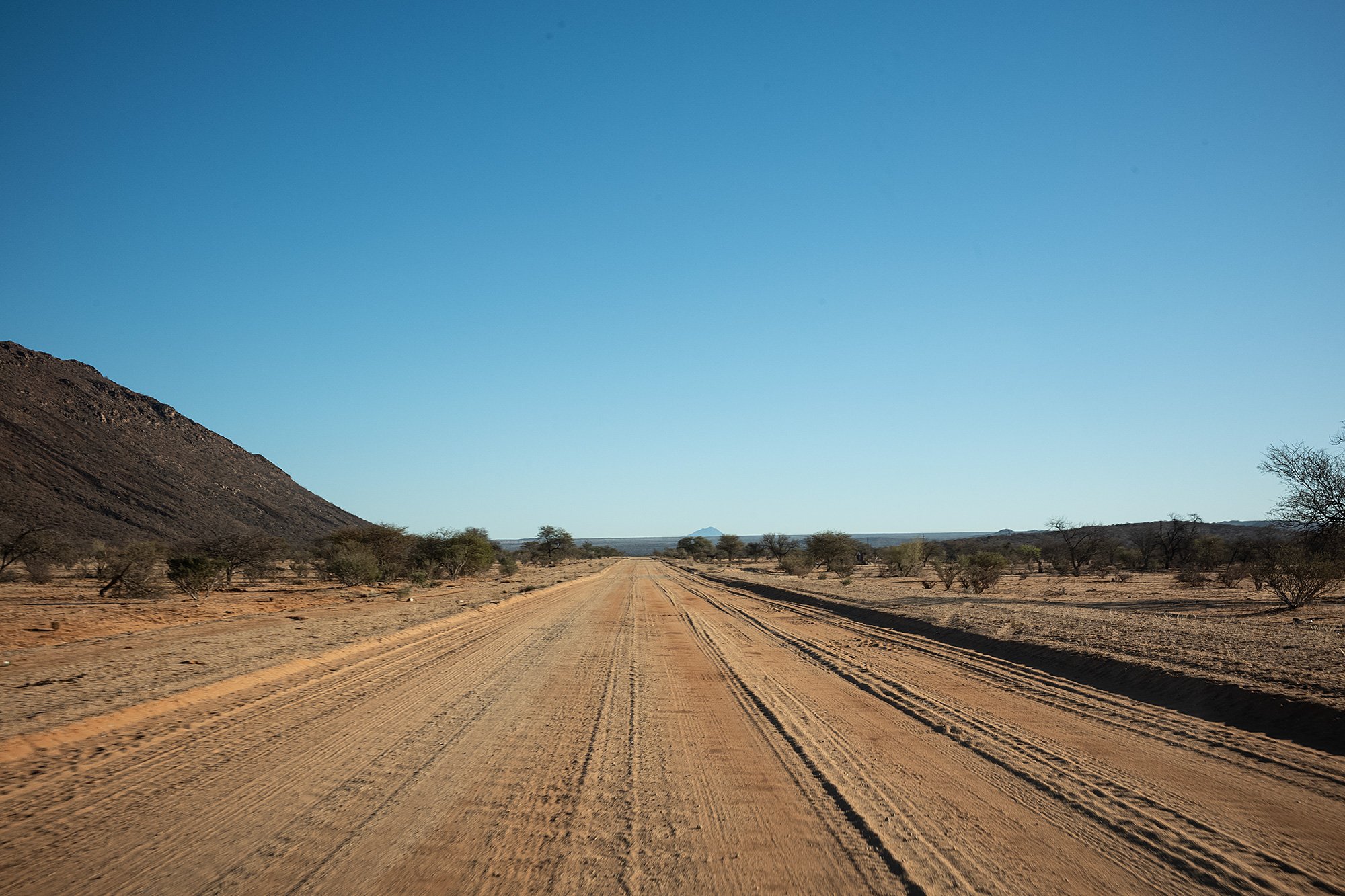
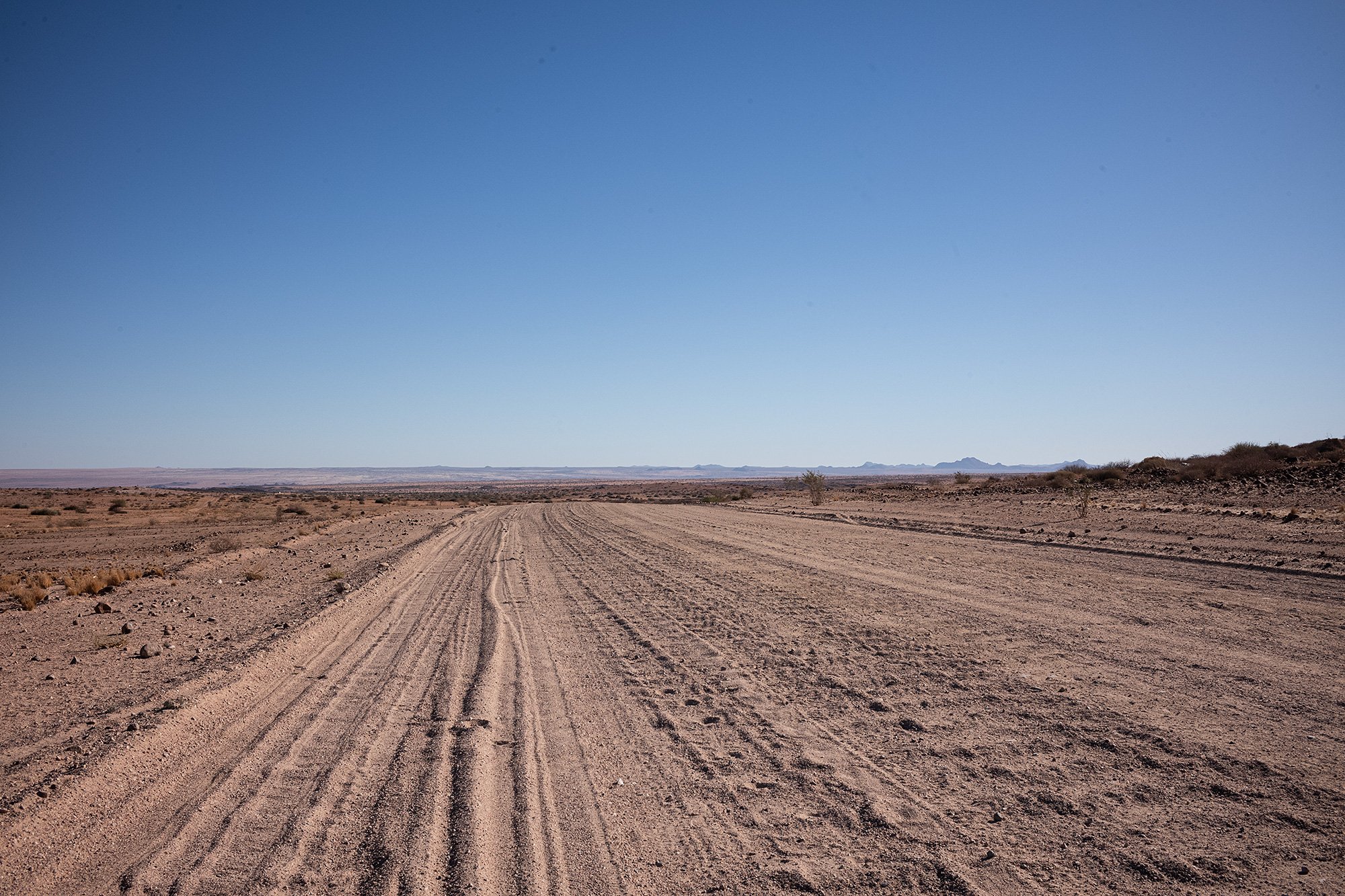
About two hours into the drive I see a sign for the White Lady Painting pointing off to the west. I pass it by but after a few minutes I turn around. Soon I’m driving towards Brandberg Mountain to indulge my curiosity.
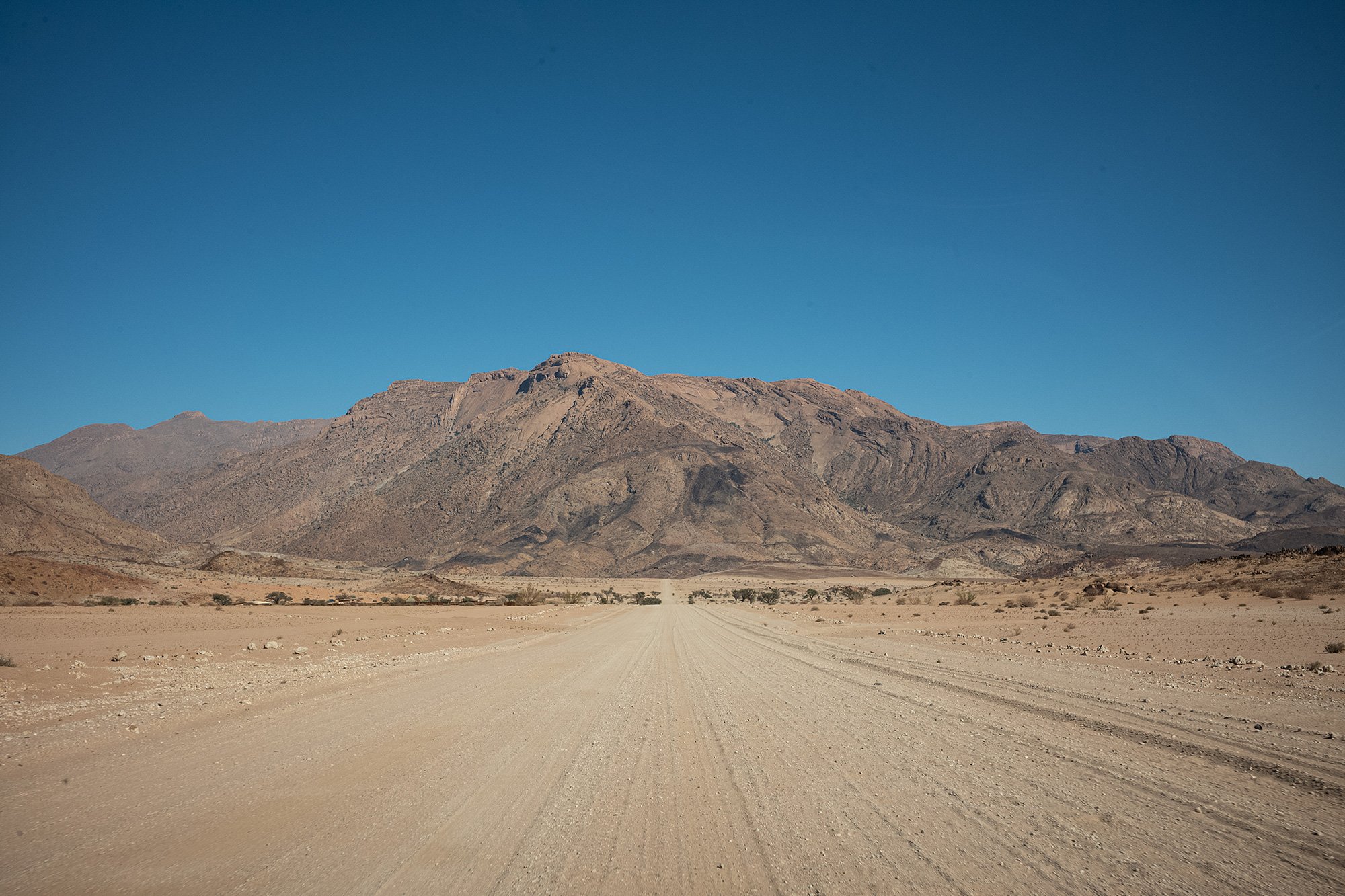
At the parking lot I’m asked if I want a guide. I ask how long the walk is. I’m directed to a small structure where I can ask a park attendant and pay the entry fee. I’m told it’s at least a two-hour round-trip hike. I check the time and decide I want to make it to the lodge in time for lunch. I thank the attendant and head back to the car.
I pass underground rivers, their presence made known by the vegetation that grows above them. I pass goat farmers tending to their flocks. I pass rusted out shells of trucks slowly disintegrating into the desert.
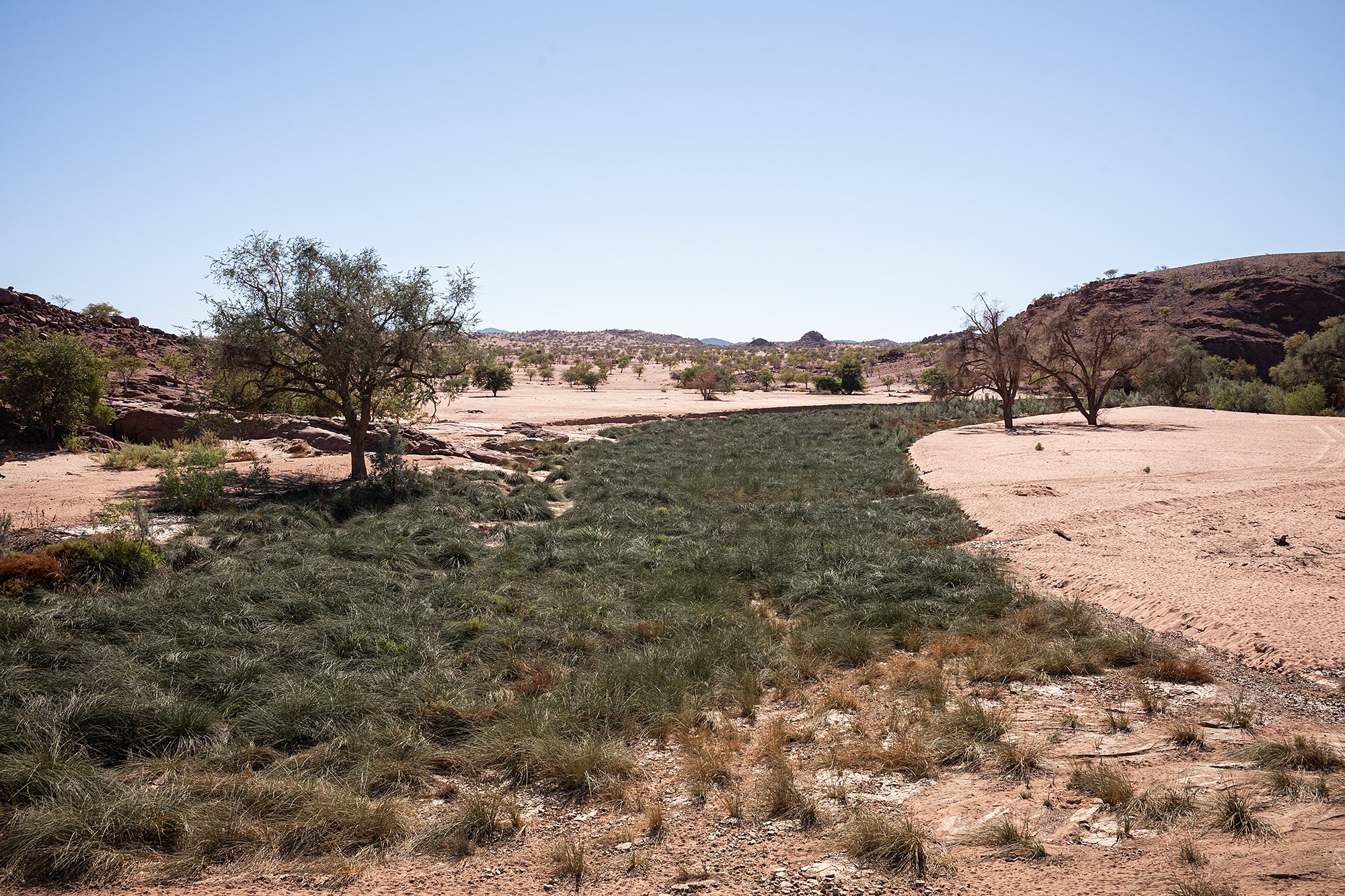

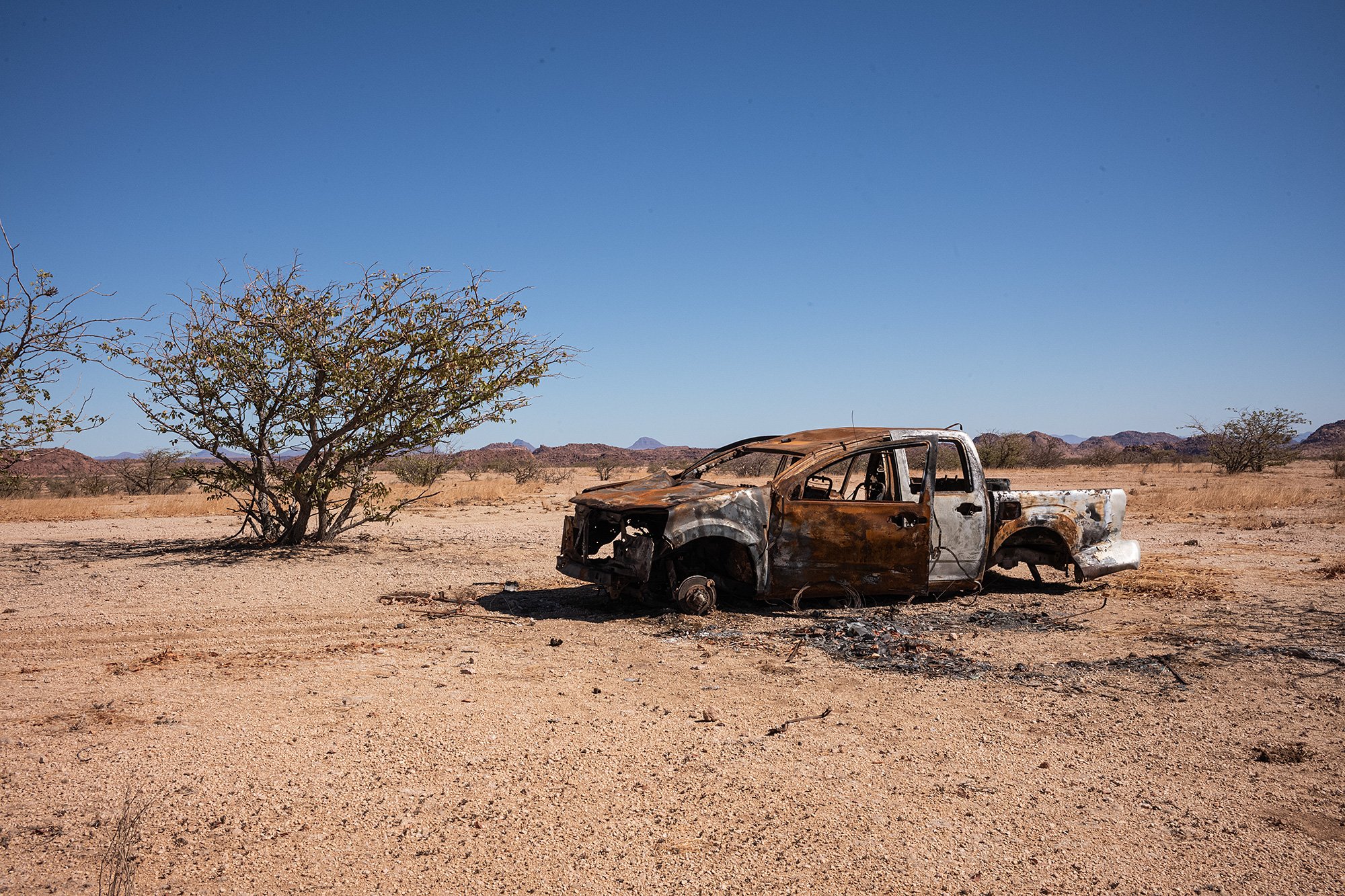
Nearing the lodge the road becomes sealed. There are signs for the organ pipes (a rock formation of basalts) and Twyfelfontein, a large concentration of rock engravings made thousands of years ago. I consider stopping by Twyfelfontein as I’m passing by, but the lodge arranges visits and I press on.
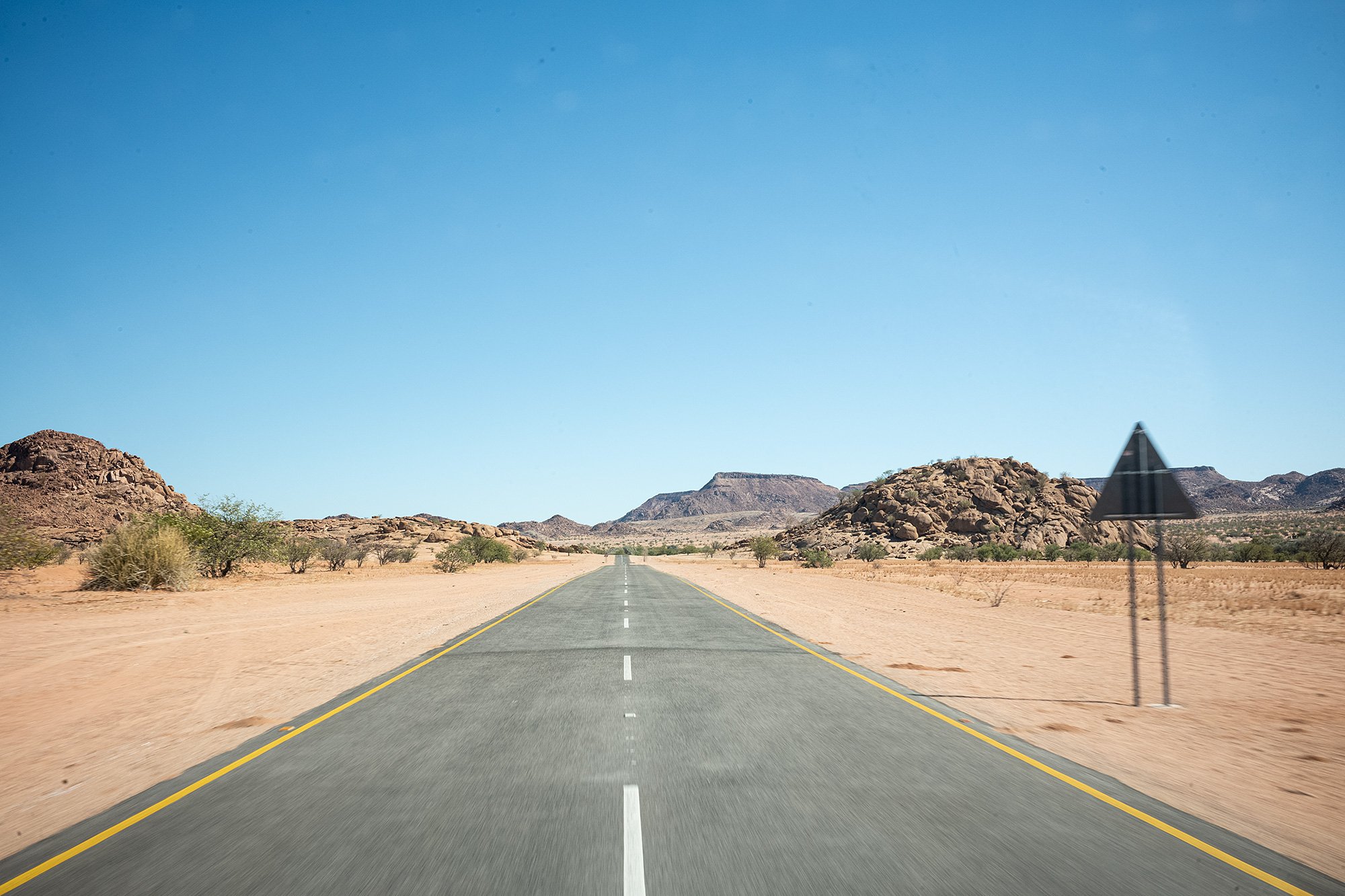
At the lodge I’m welcomed and invited to lunch. I’m given the family tent as a large group of 17 will arrive to take up the single tents. The lodge is empty save for a single woman who’s checking in on arrangements. I’ll find out later that she’s a Russian guide and that the large group is under her purview. They’ve rented cars and are caravaning from place to place.
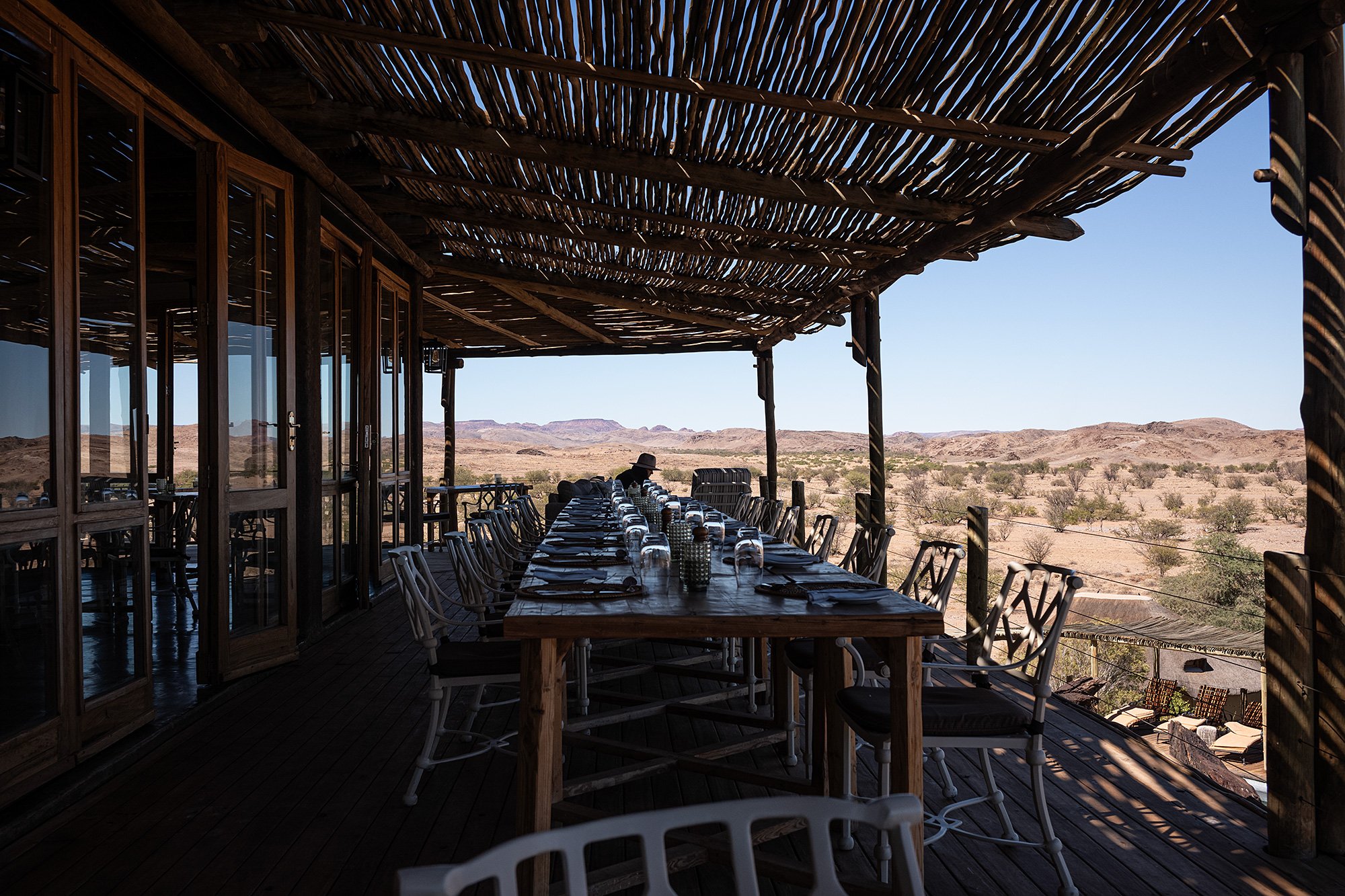
There’s a mother/daughter couple from the States eating lunch. The day before they had stayed at the Desert Rhino Camp, a sister lodge, and are on their way back home. Their flight to Windhoek isn’t until later in the afternoon and Doro Nawas is hosting them until their pilot arrives. We chat about Namibia and about southern Africa in general until we hear the plane approach.
I’m introduced to Bons and he outlines an itinerary for the afternoon. We’ll visit a petrified forest and Twyfelfontein. He doesn’t think there’ll be time to visit the Damara Living Museum. I’m ok with it. We’ll set off after lunch.
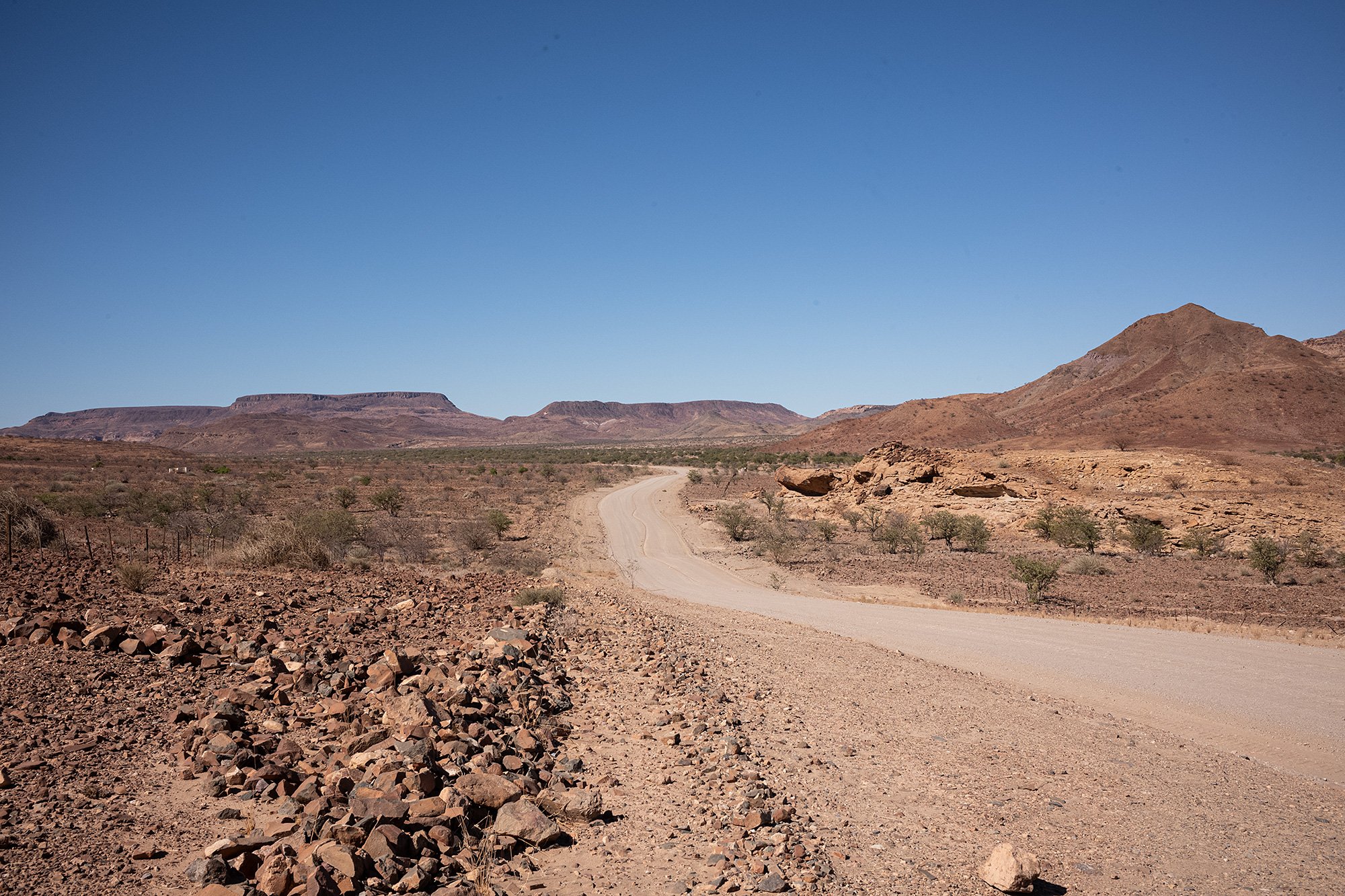
En route to the petrified forest we pass makeshift signs pointing to various petrified areas of the desert. Bons passes them all by.
Susana meets us in the parking lot and leads me around a dirt path, pointing out petrified logs both large and small. the largest 4 meters in diameter and 10 meters long. At one point she stops and guestures to one with her walking stick. What does it look like? An alligator. She nods and taps on it with her stick. It resonates. A hungry alligator, she says.

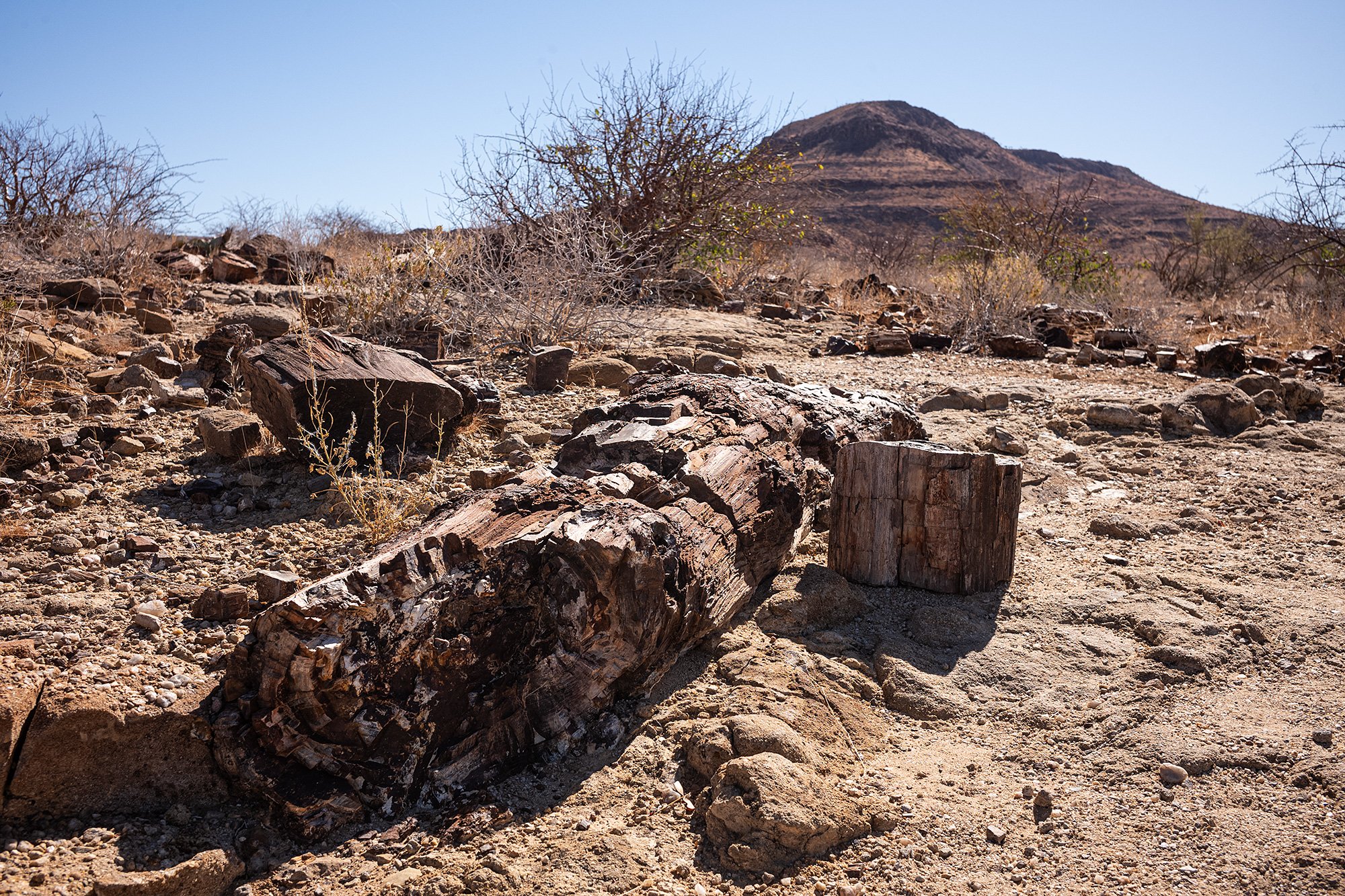
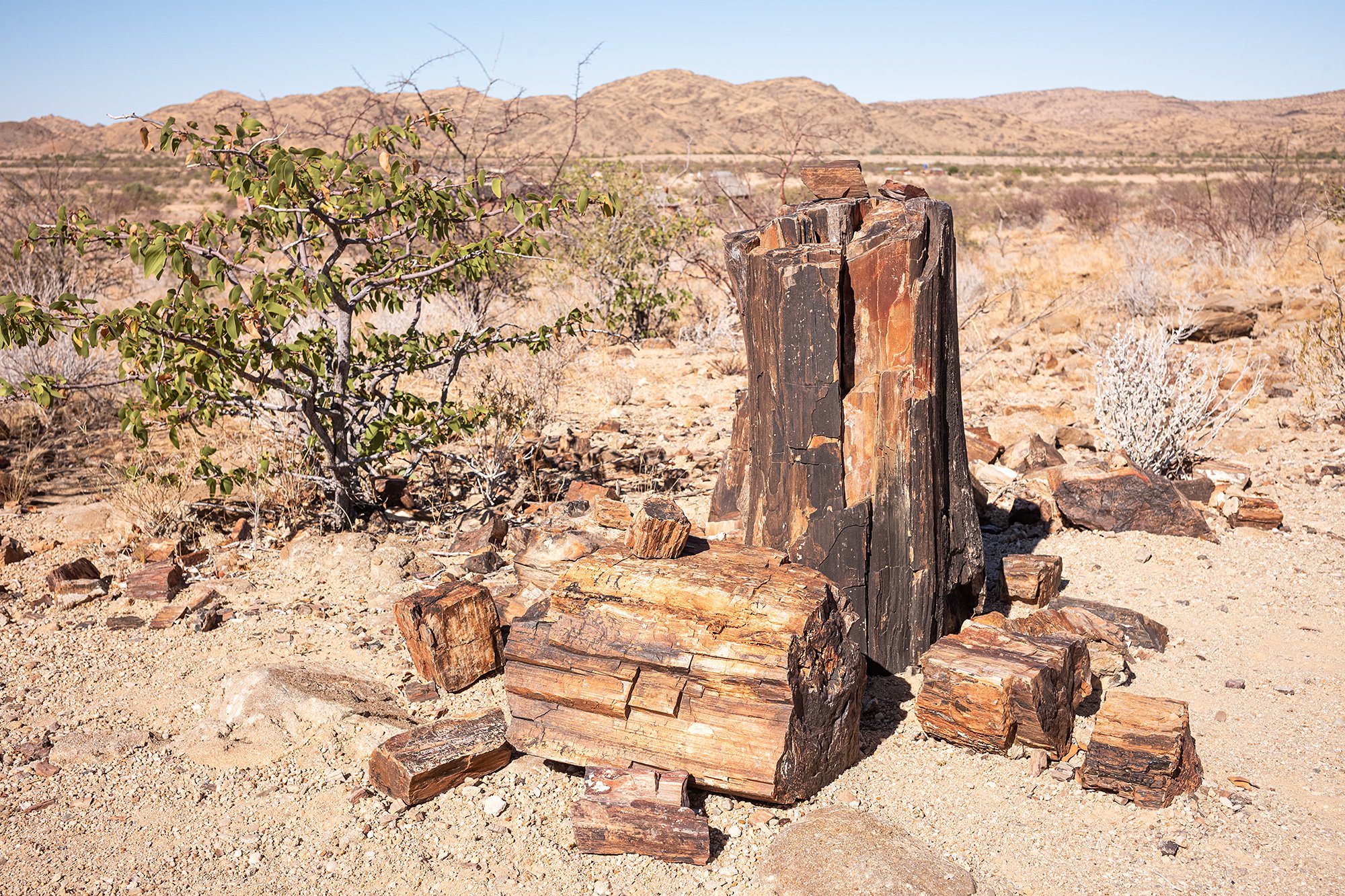
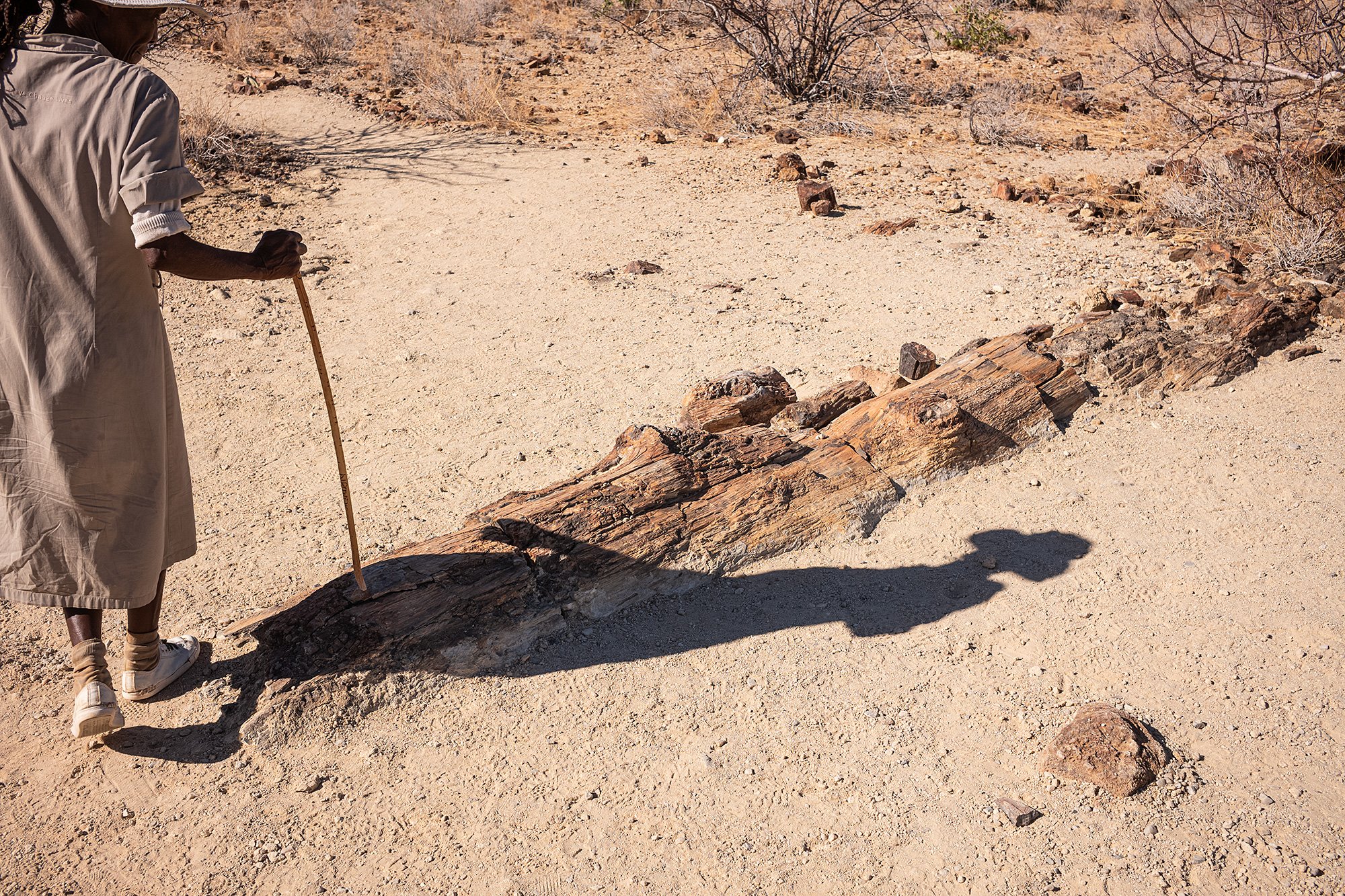

As we walk Susana also points to the Welwitschia Mirabilis that dot the landscape. Endemic to the Namib desert, some are said to be 1500 years old or older leading some to call them living fossils.
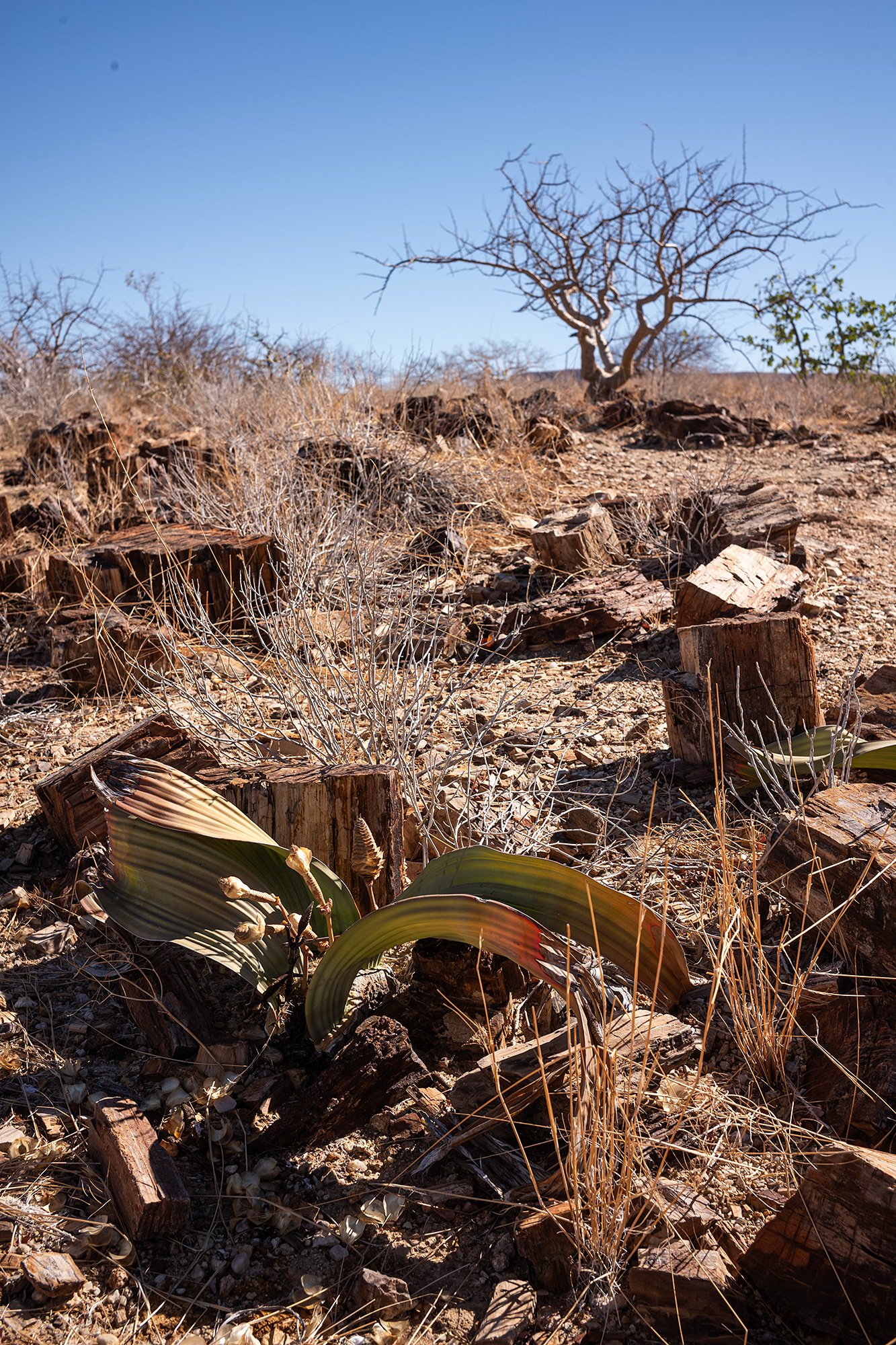
I bid Susana adieu as we complete the loop to meet Bons near the vehicle. We drive back along the road towards camp and then turn towards Twyfelfontein. We park the car in the lot and walk a short way to the entrance where Desiree meets us. She’s been a guide for 17 years and will guide us today. A trainee will join us, shadowing her as she explicates the history of the area.
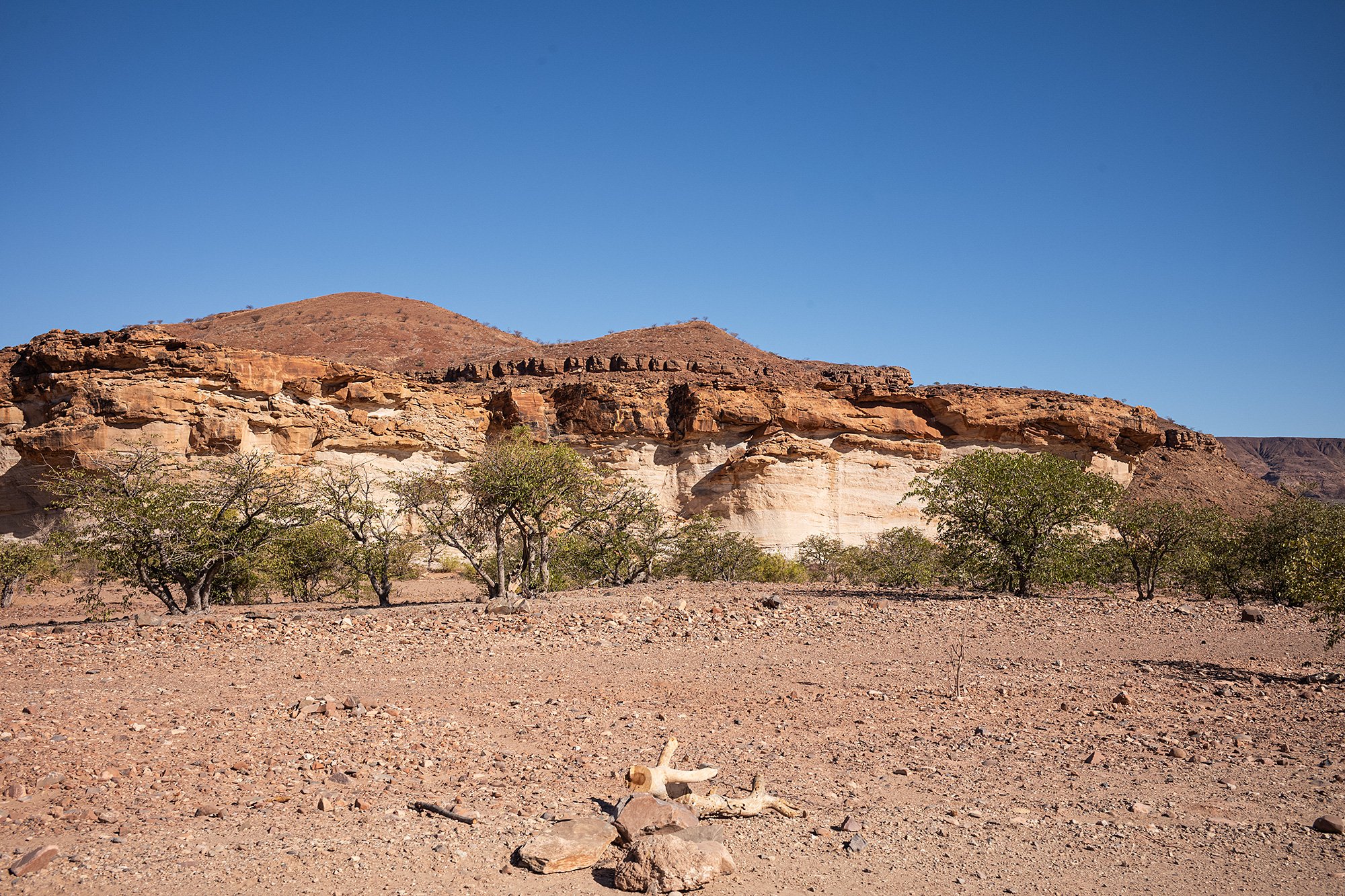
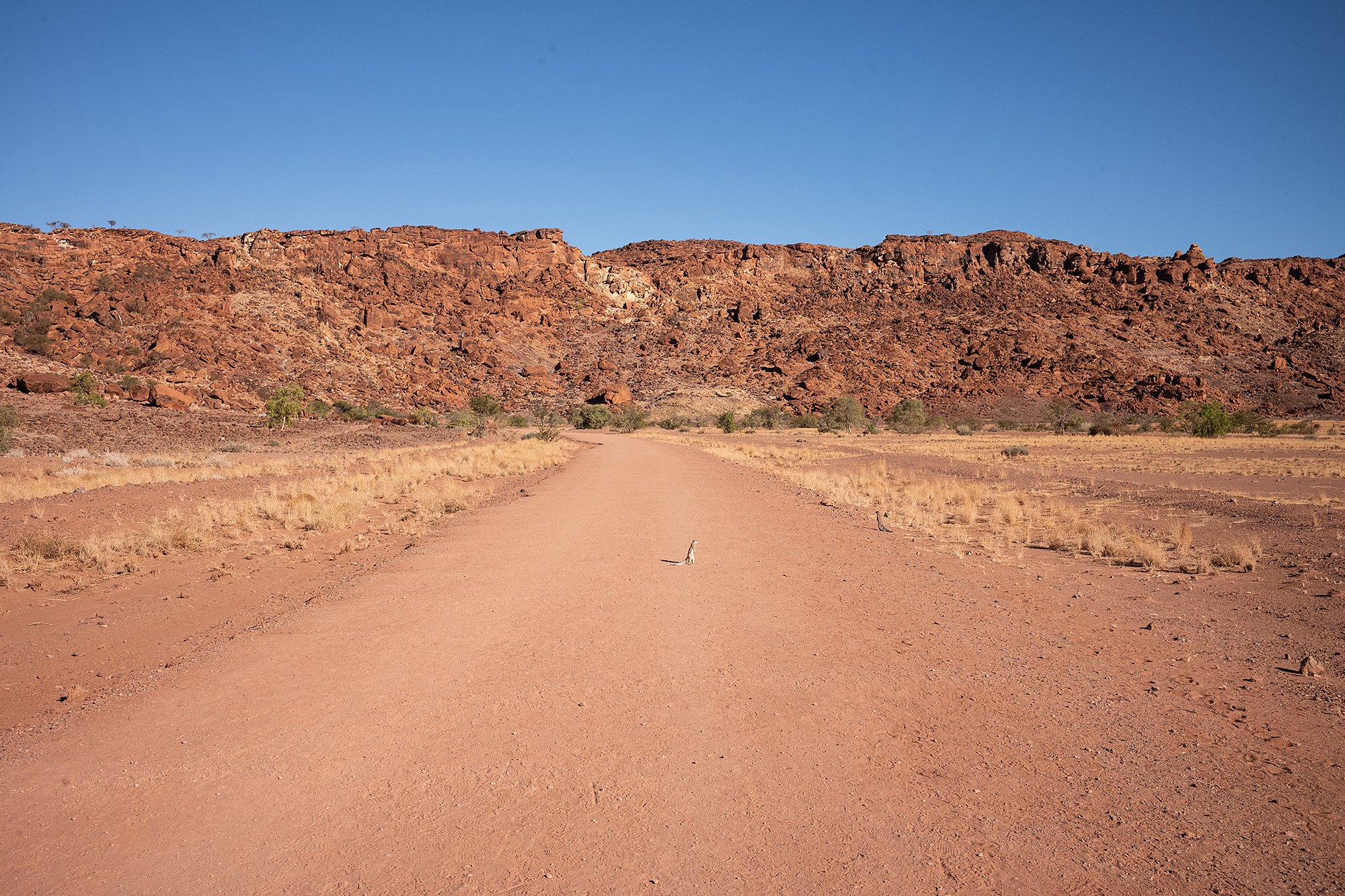
Desiree leads us into the mountains and up and around the rocky paths. She points out rhino and giraffee and circles with dots in the center, which symbolize water. One particularly engraving is a map of water sources.
She points out a 4-headed ostrch, representing movement, and penguins and seals, which prove that the San people who made these engravings were a nomadic people. They traveled to the ocean to obtain salt to preserve their food.
I’m amazed at the sheer number of paintings. They bunch up on large flat surfaces along our walk and Desiree points out more paintings on rocks that lie further beyond the path. There’s one of an elephant that I love but it’s far beyond the path we follow.
She leads us up a path and a set of stairs to show us an engraving of a long-tailed lion, which has become a national symbol of Namibia. You can find the engraving on postcards, she tells me. Now I can make my own.
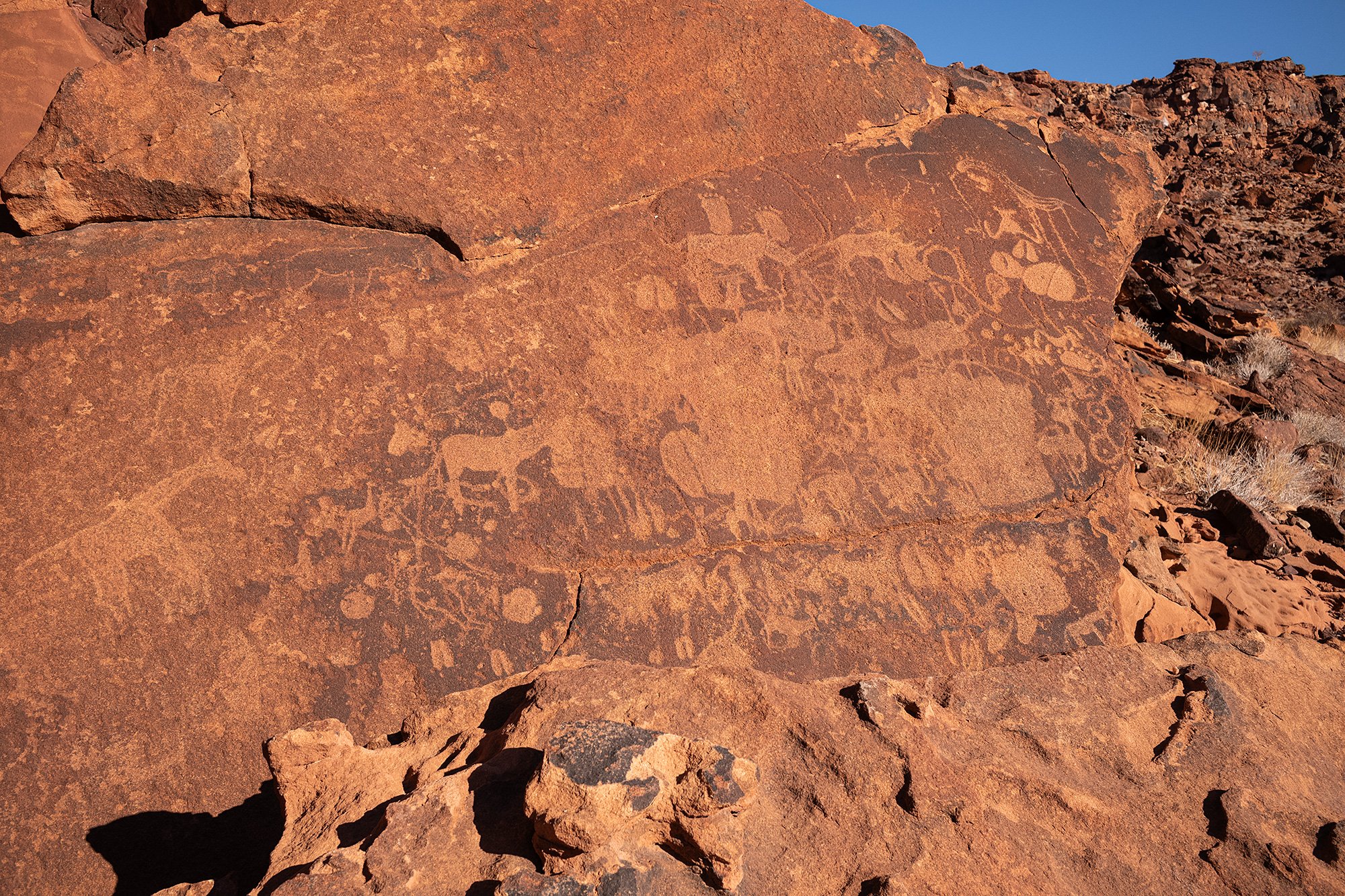
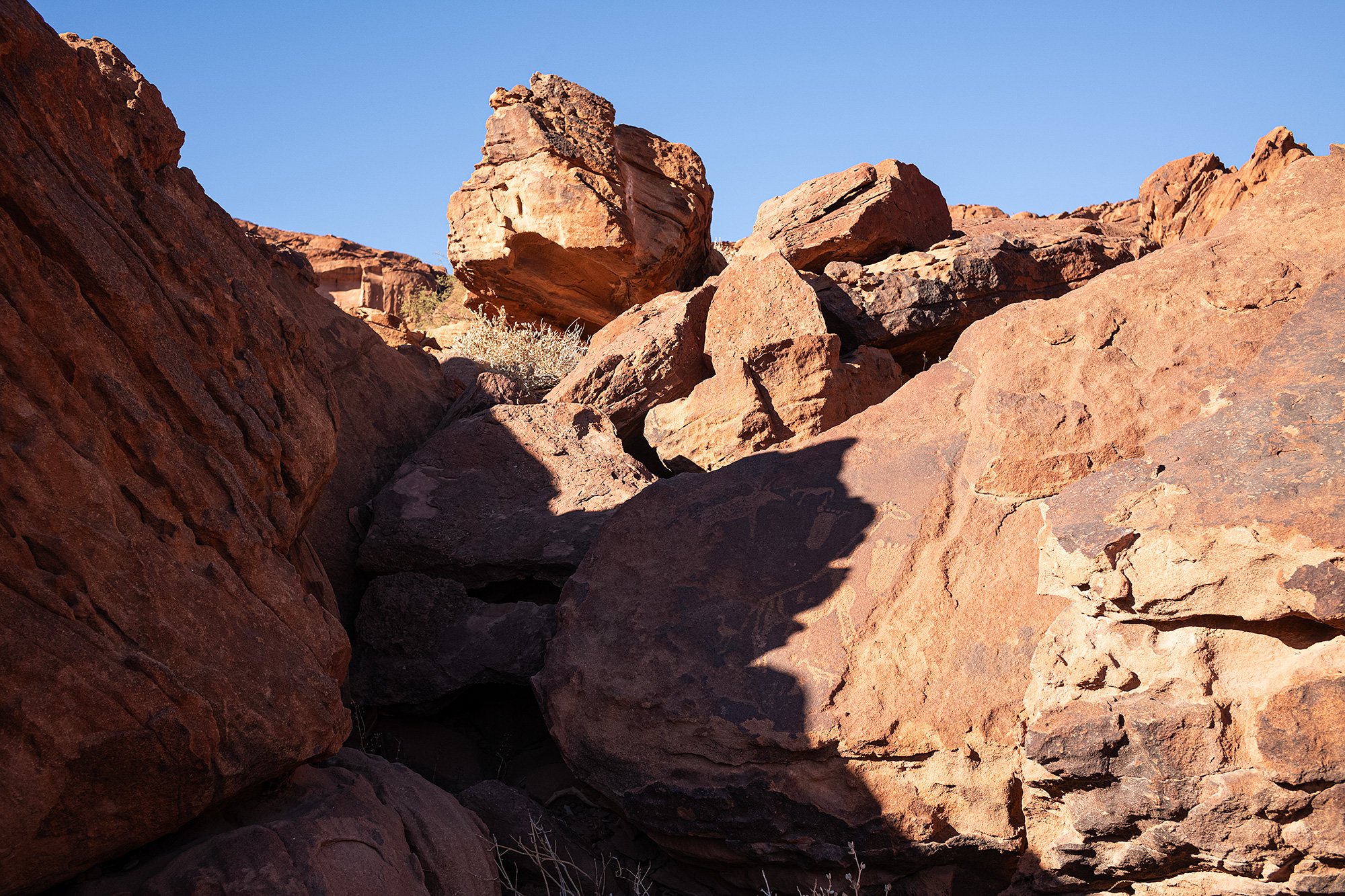
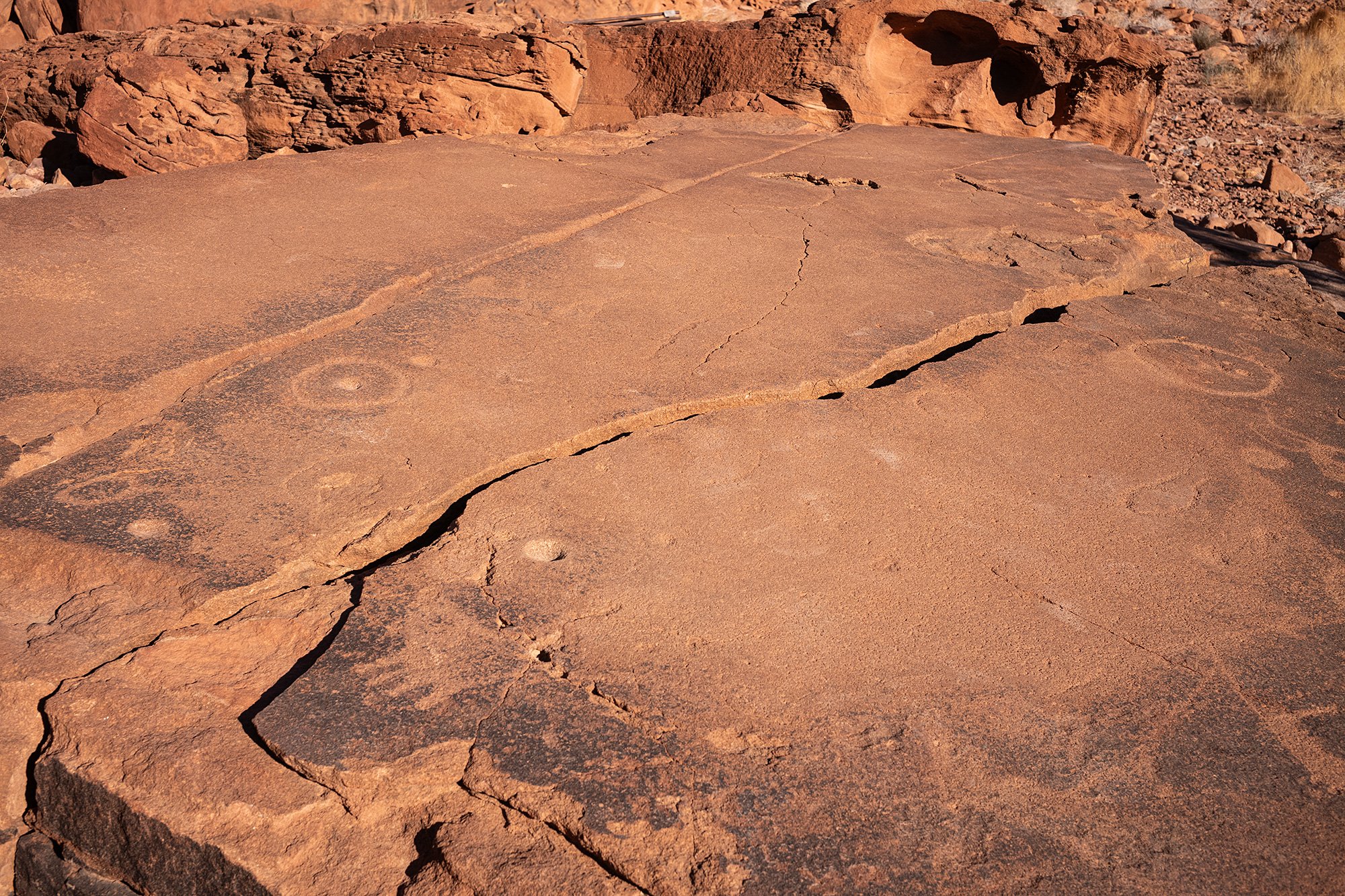

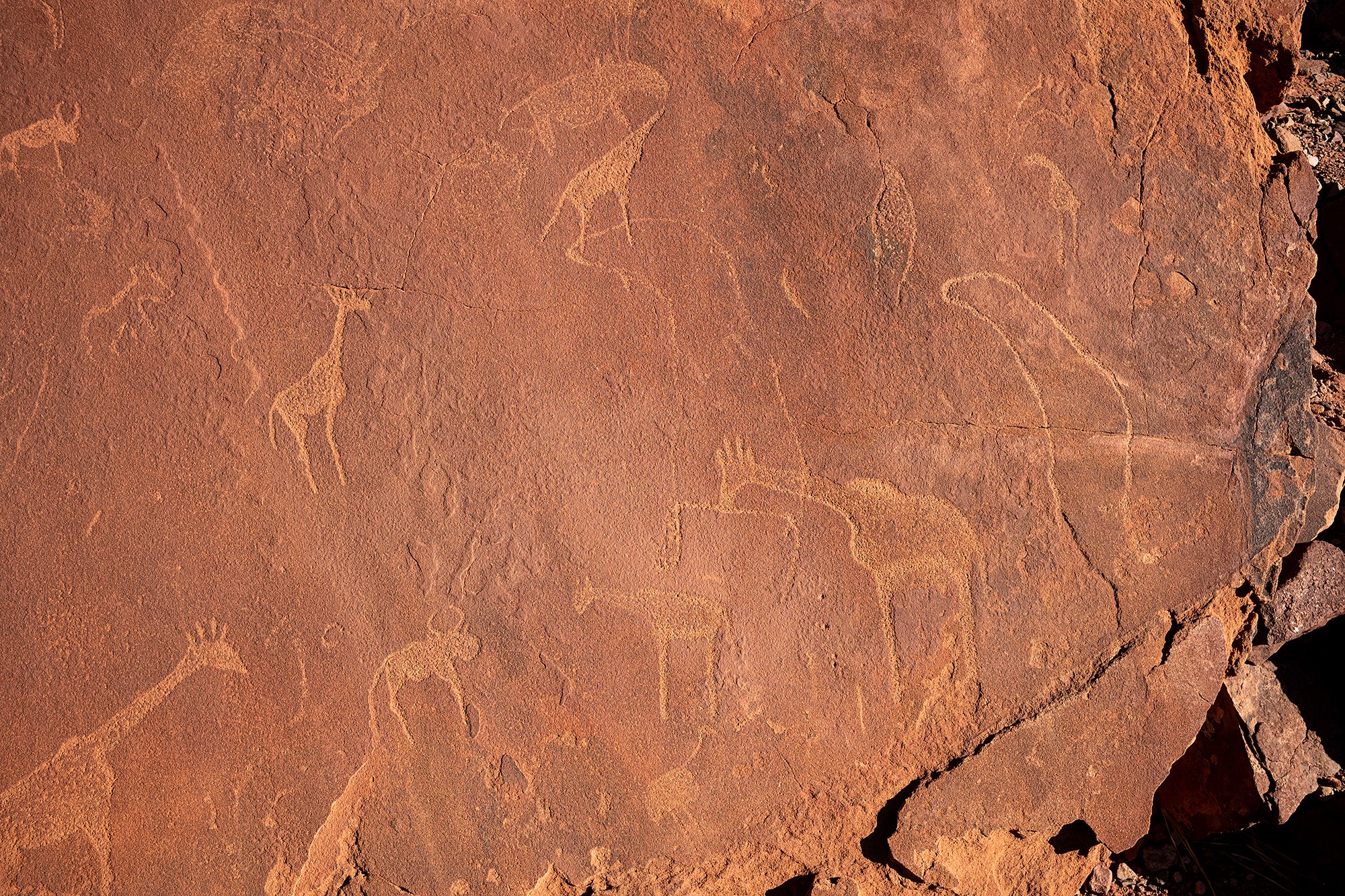

We close our loop and begin walking back towards the entrance. I ask if there’s another loop we can do. I had seen people walking further into the hills.
Desiree tells me that there is another loop but we see similar things. I ask if we can do that too. She tells me that the park closes at 1700; it’s already 1658. I ask if we can run.
It turns out she’s as concerned about getting home. There’s a truck that takes the guides and administration workers home at the end of the day and as we arrive at the entrance it’s filling up. Desiree gathers her bag and waits for her trainee as the truck fills and drives away.
Boms asks if we can offer her a lift. I tell him I was about to ask him if we cold. She climbs into the vehicle along with the rest of the people the truck had left behind and we drive along backroads to the village.
Along the way she tells me that the people who have been waving plastic bottles by the side of the road are asking for water. There’s been no rain for seven years. She asks me to stop and offer any extra I might have.
We arrive just behind the truck and let everyone off. Bons seems me taking photos of the village and calls out to Desiree, asking for a photo. She turns and waves, flashing a huge smile.
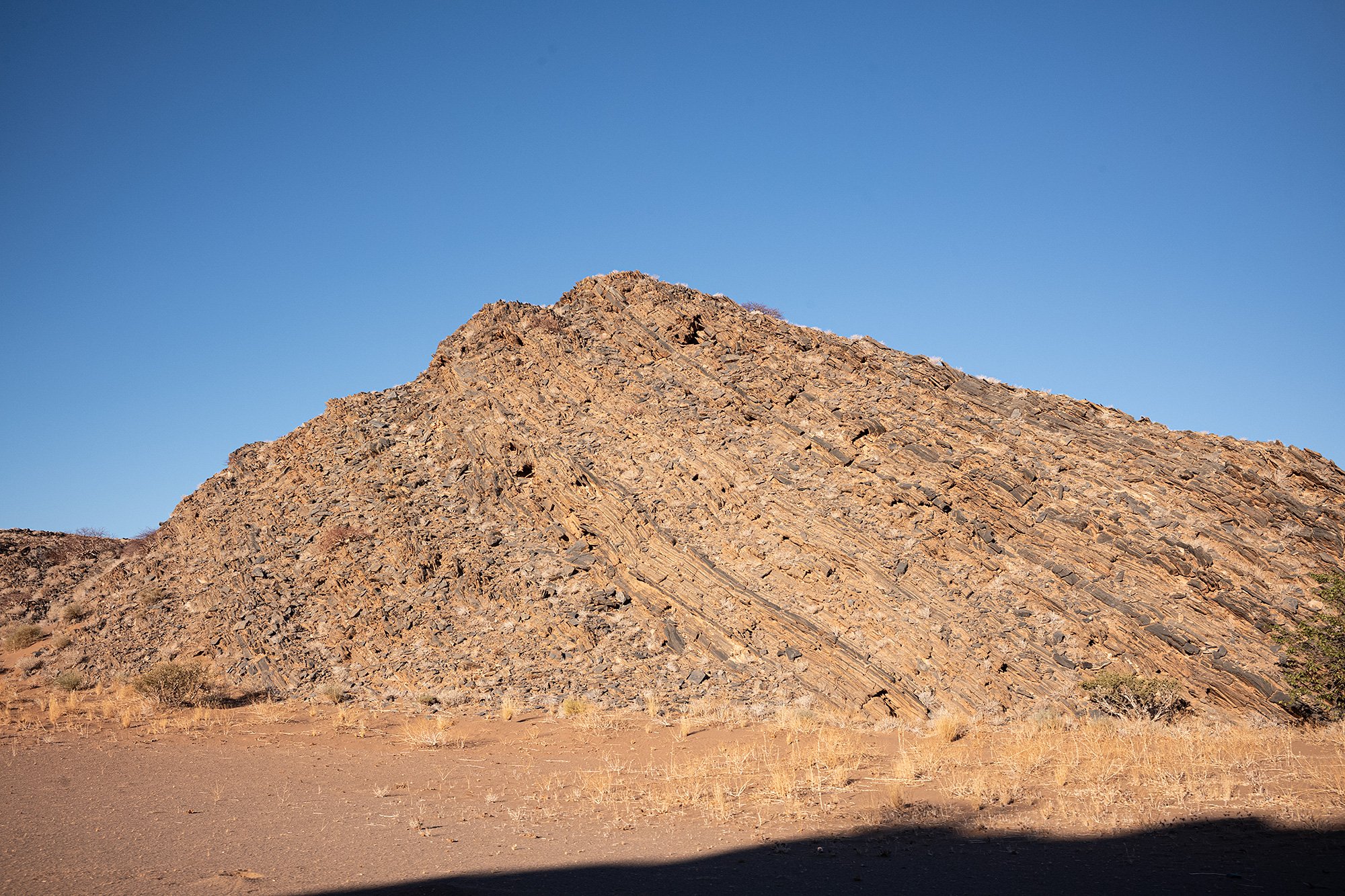
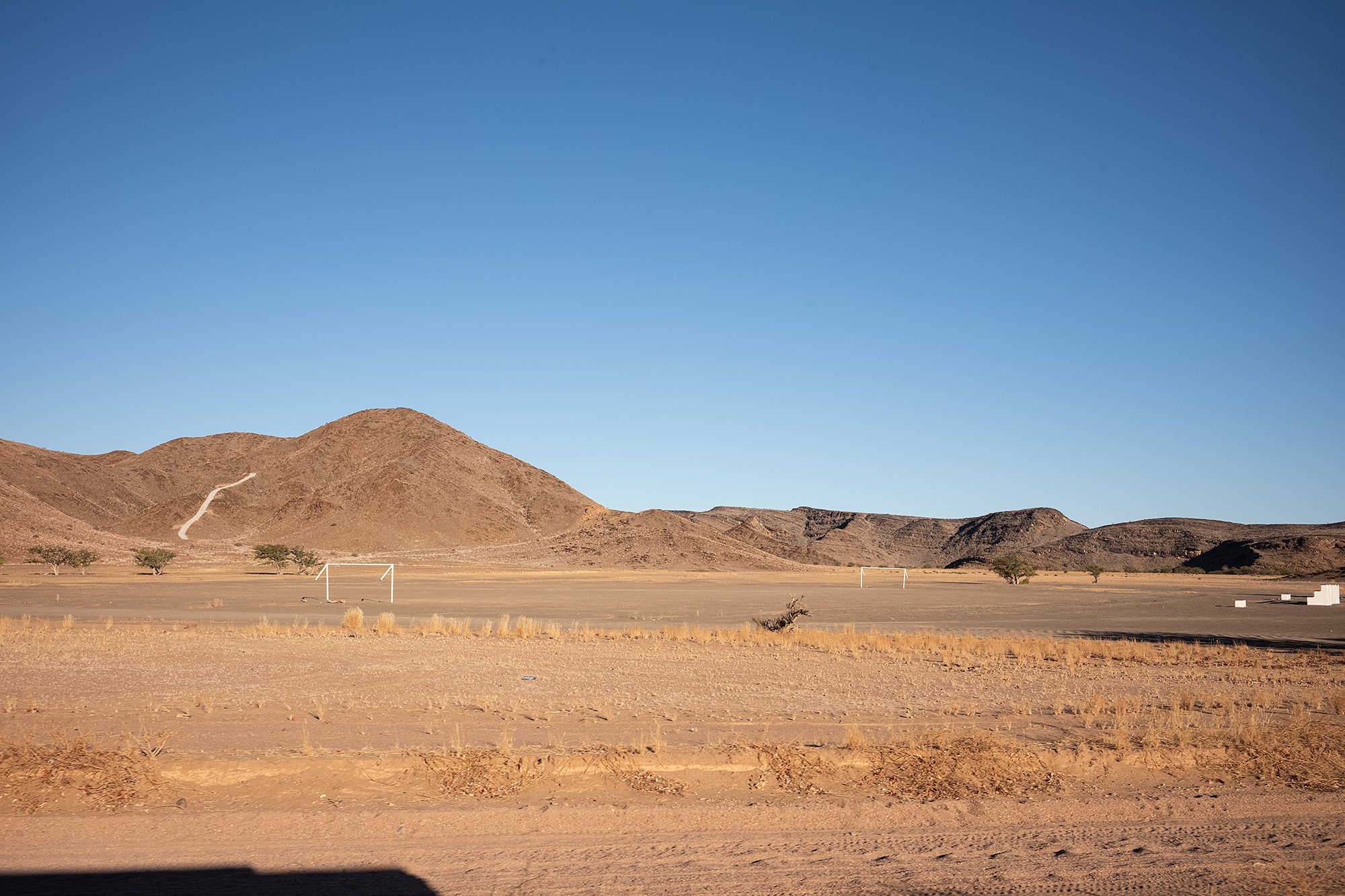
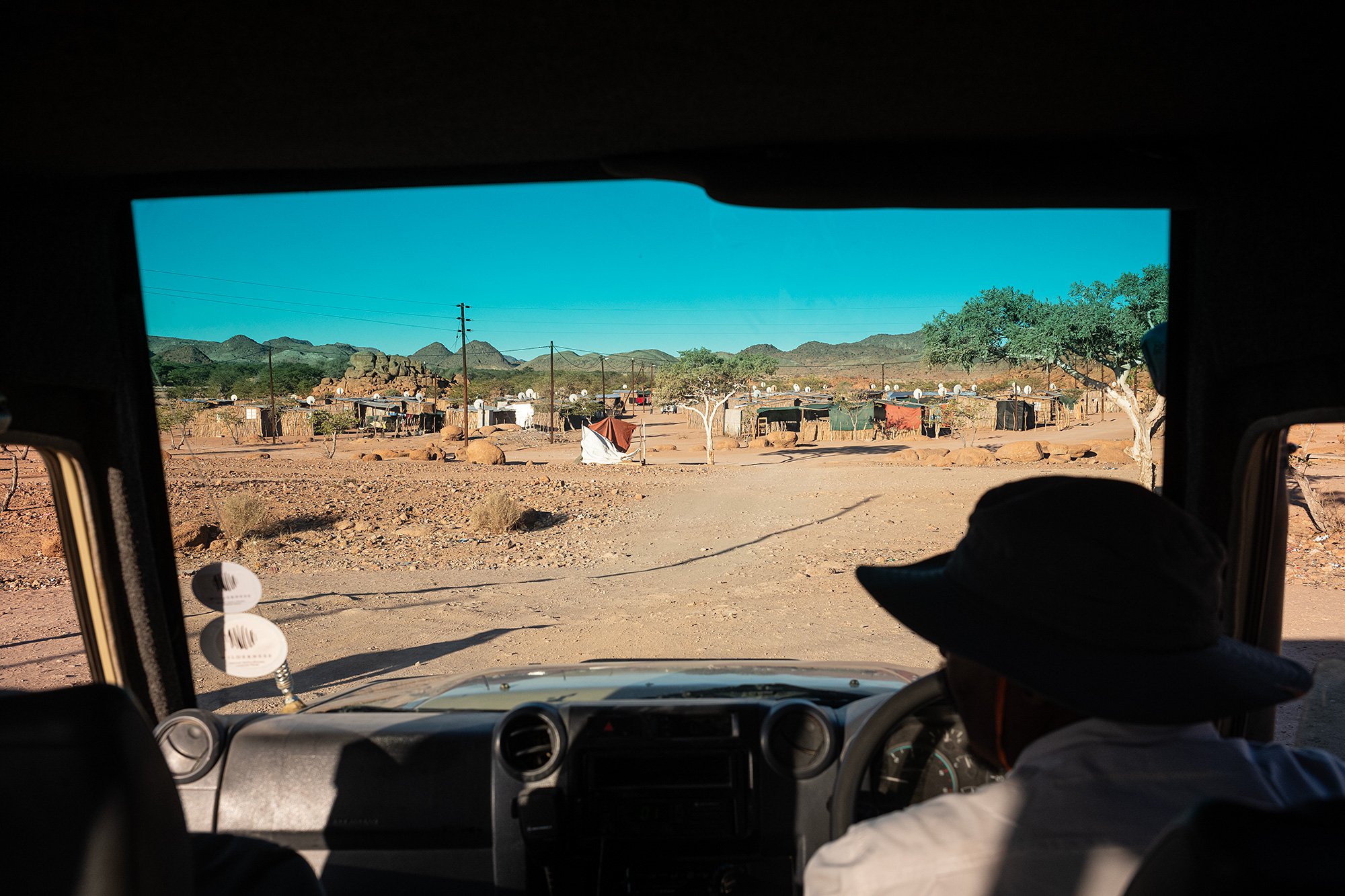

Bons checks the time and stops by the Damara Culture Living Museum on the way back to the lodge. We park the car and walk through a crack in a huge rock to find ourselves in a recreated village. A woman dressed in historically-accurate animal skins walks us to various areas of the village where others tell us about traditional medicines, blacksmithing, leatherworking, and cooking techniques.
While we’re there a large group of Russian tourists enter along with the guide I had met at the camp. At the end we arrange ourselves on benches on one side of the village and watch as traditional songs are sung and dances danced before us.
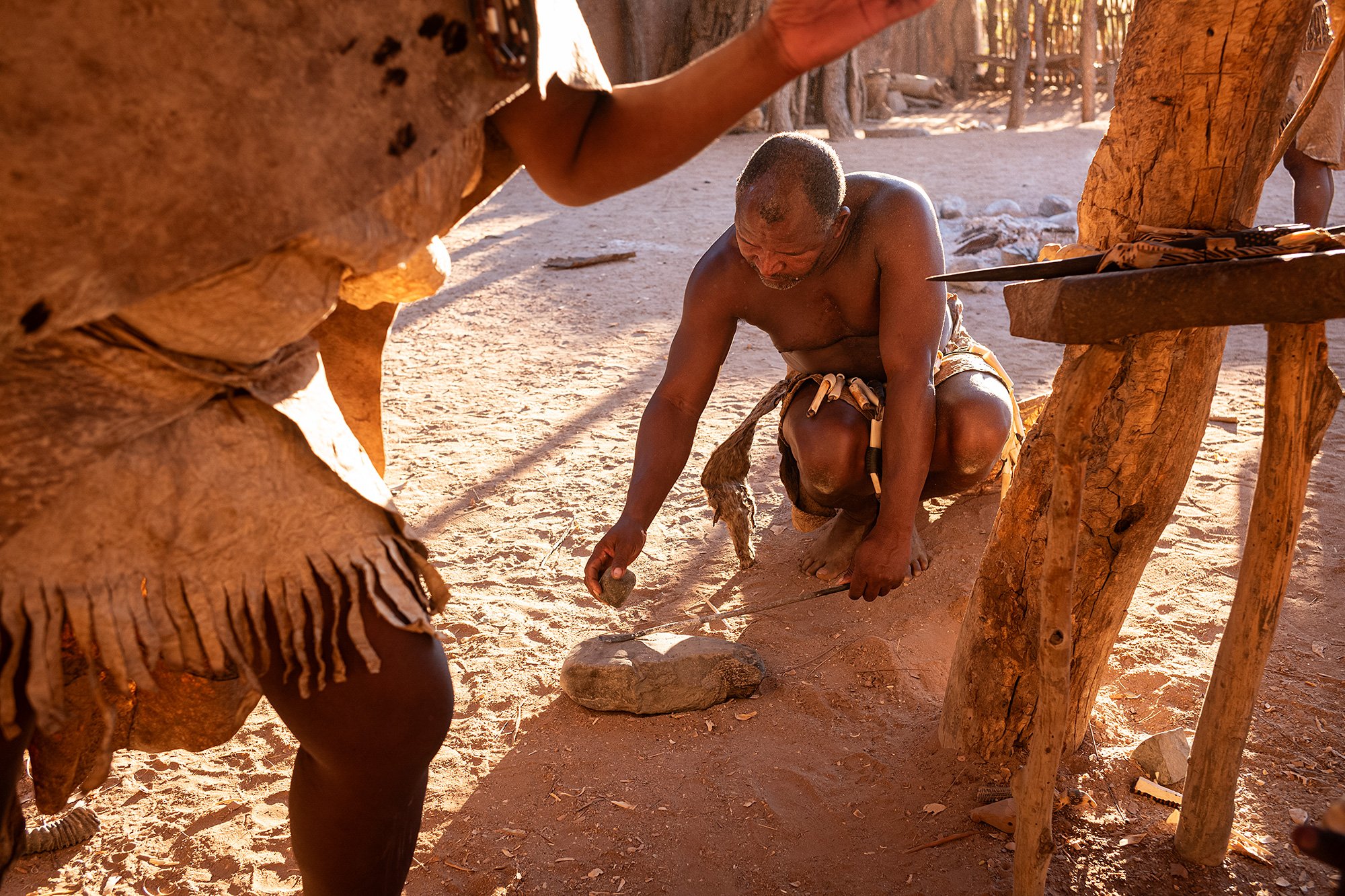
Bons drives into the desert. He spots elephant tracks in the dirt and we follow them into the valley, driving along riverbeds and the plains as the sun sets behind the mountains around us.
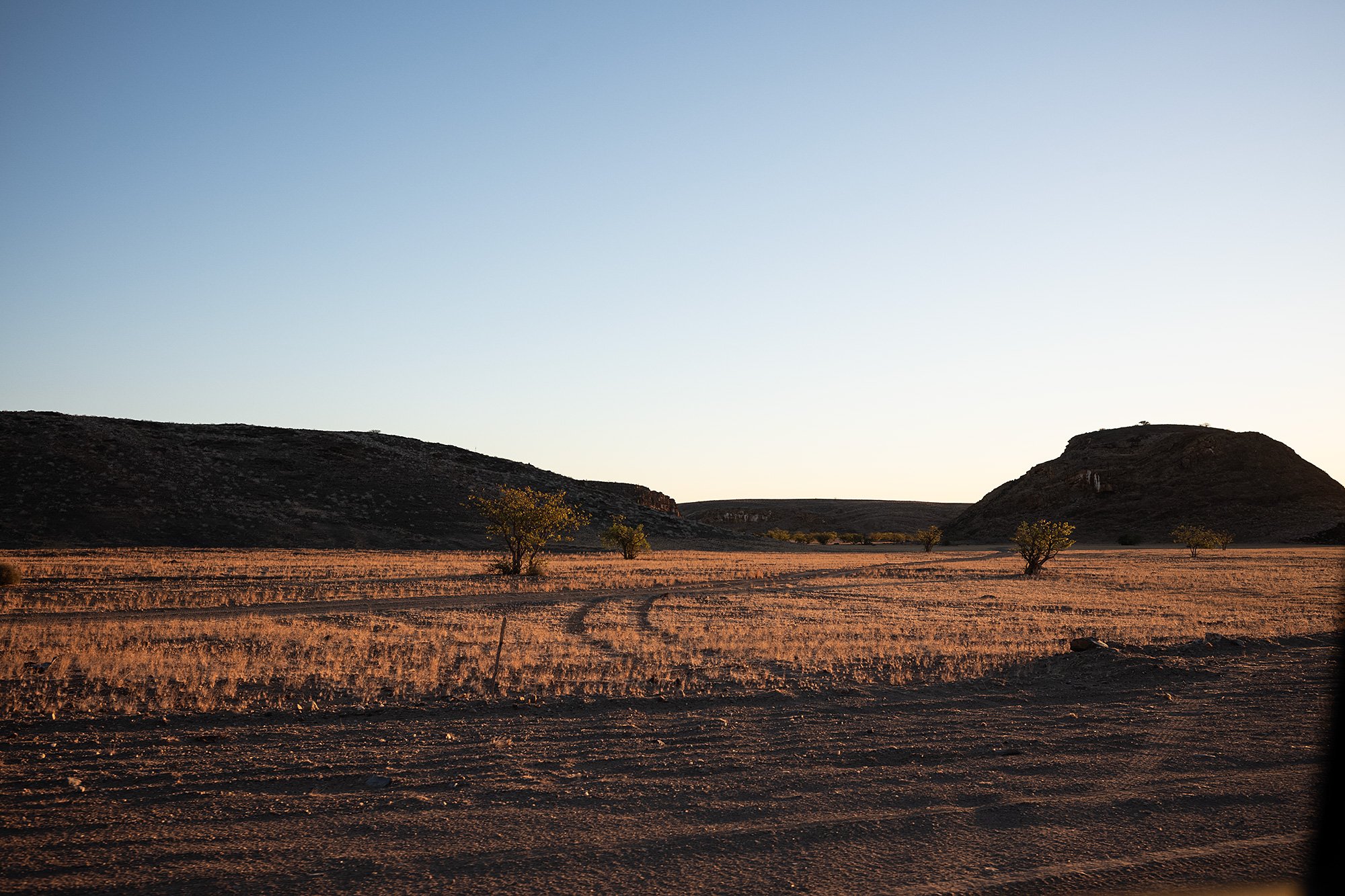



We don’t see elephants until we arrive back at the camp. Everyone’s out and collected outside. An elephant is just at the base of the hill, between two of the tents, and we stand along with the other guests and guides, awed at the sight. It’s the first time I’ve seen a desert-adapted elephant in the wild.
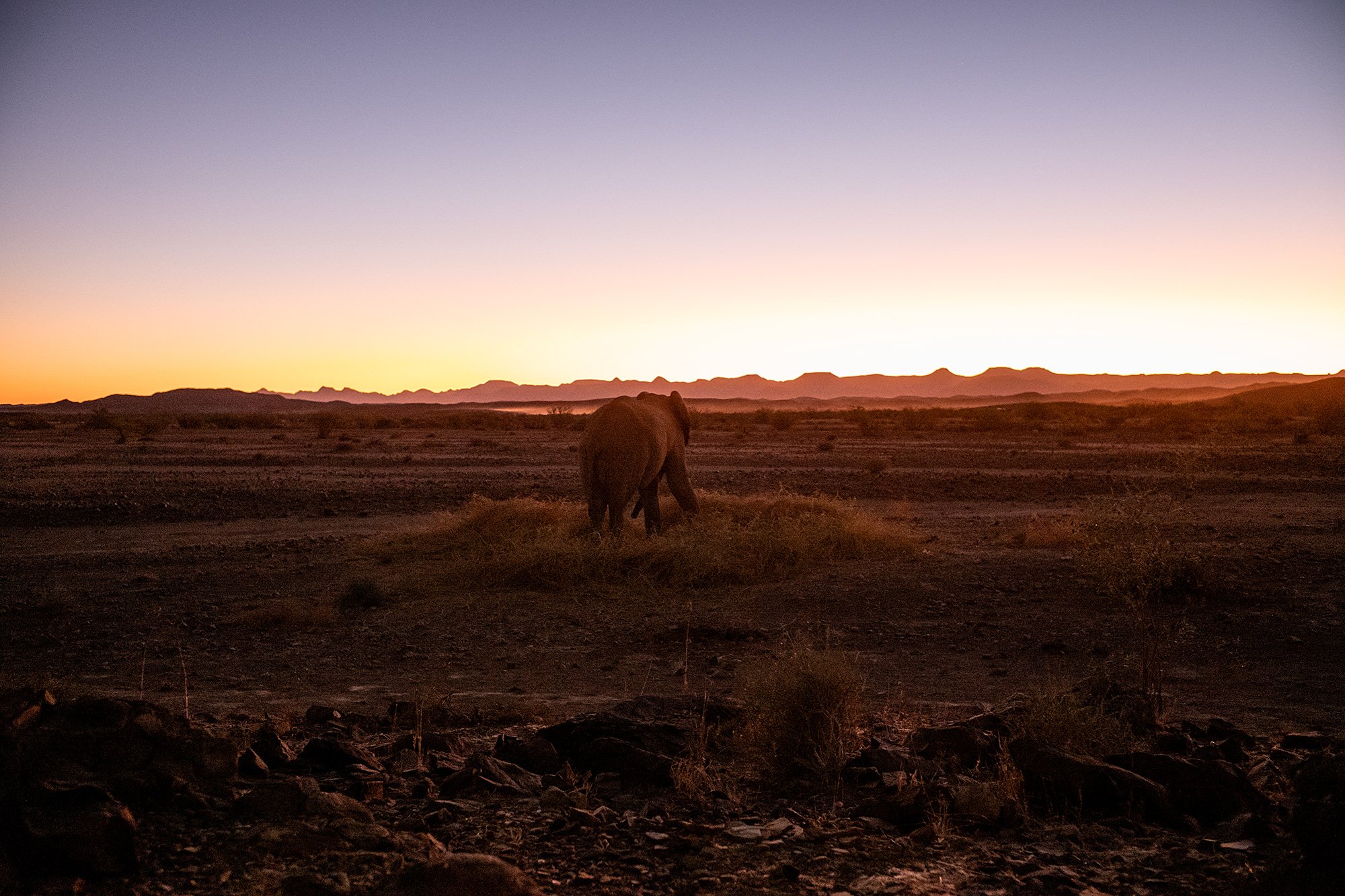
I head back to my room to clean up and then climb back up to the main lodge for dinner. A fire has been lit and candles adorn the courtyard. Julia is sitting alone, her guests sit at an extended table next to her. I ask if she’d like company. She welcomes me and Bons and I join her.
I ask her about her travels and the way in which she arranges her itineraries, she asks me about how it is that I am able to travel so much. We exchange stories and encouragement until her guests need her and she leaves us to engage with them.
I ask about having my bed moved outside so I can sleep under the stars, but am told that it’s too dangerous tonight with the elephant roaming about. Maybe tomorrow. 🇳🇦
3 June 2024
